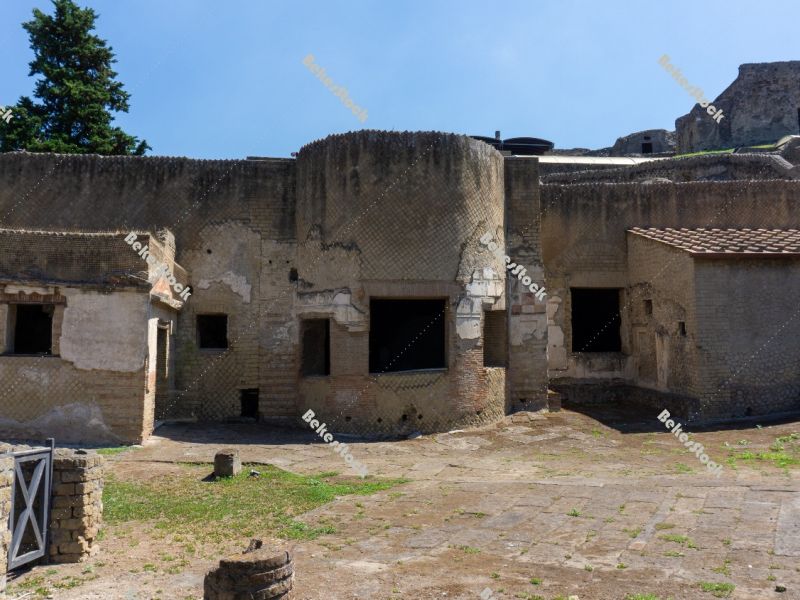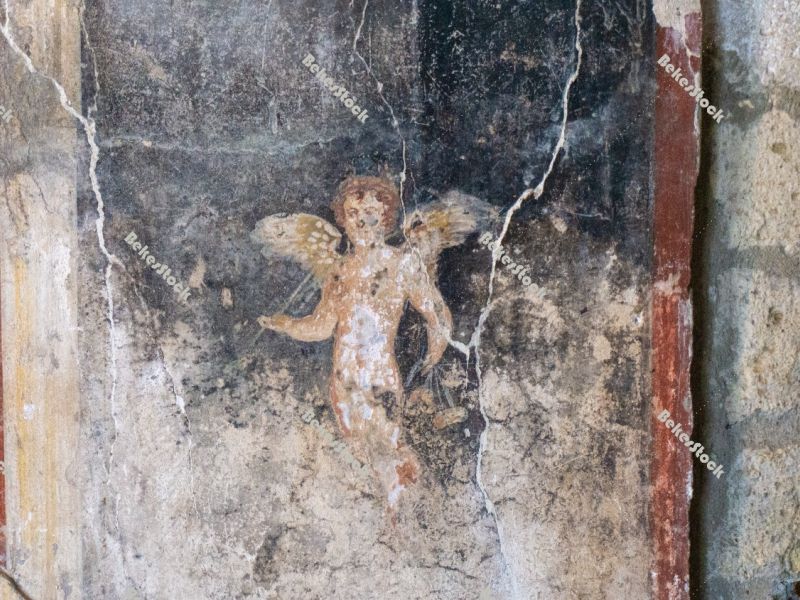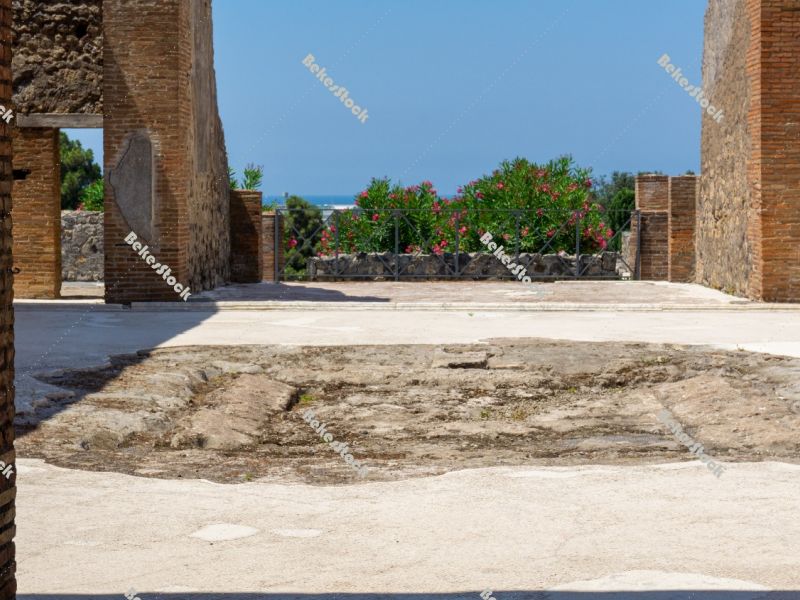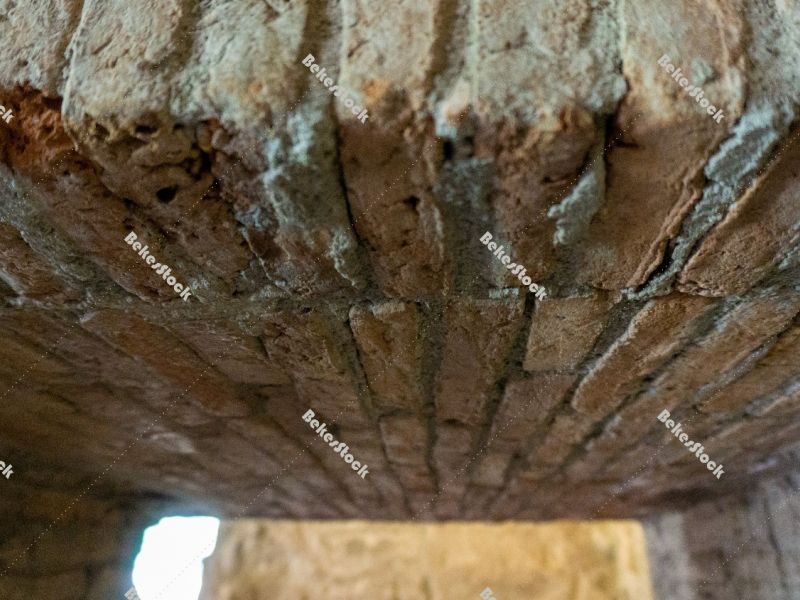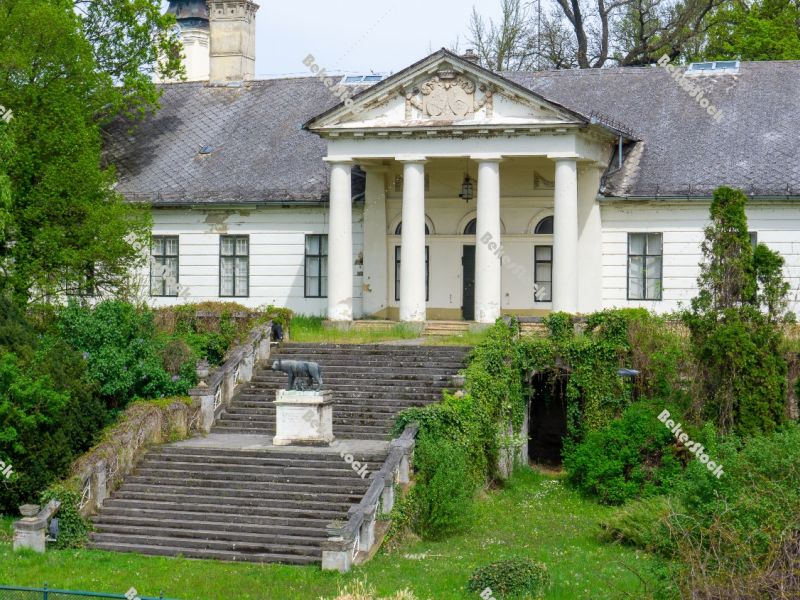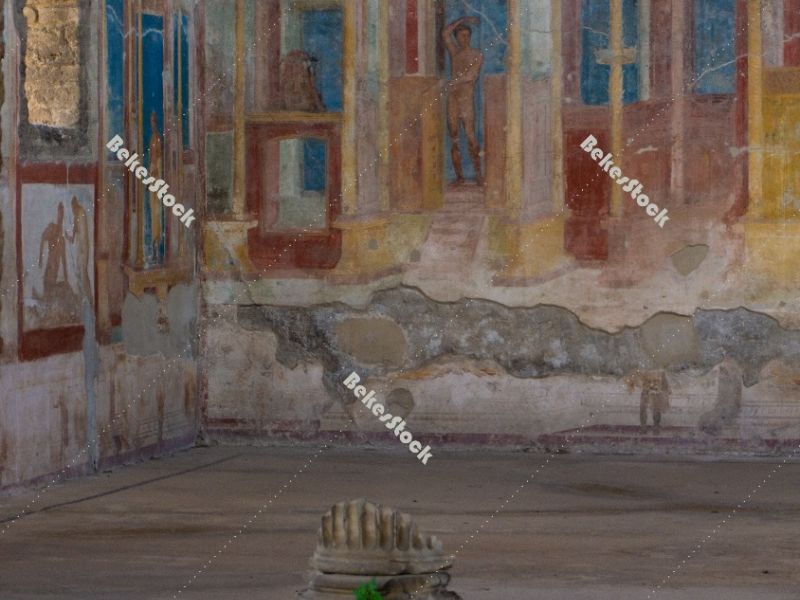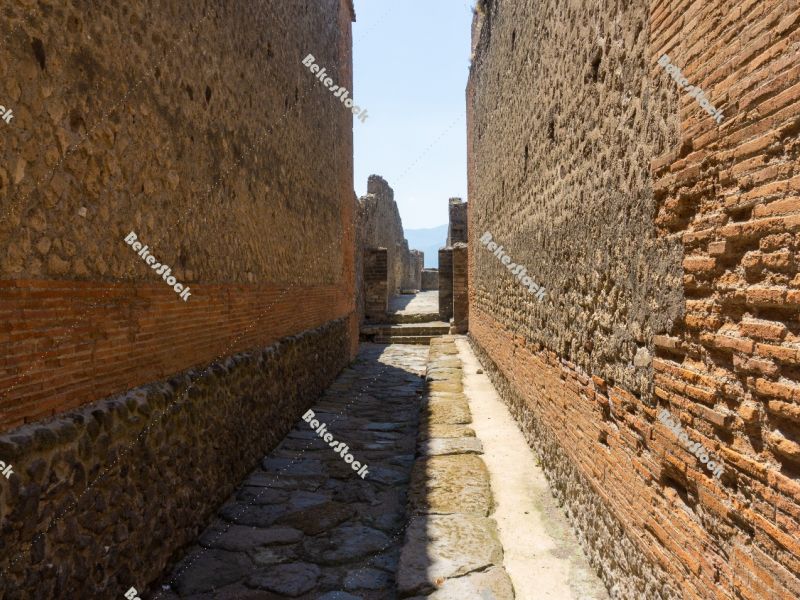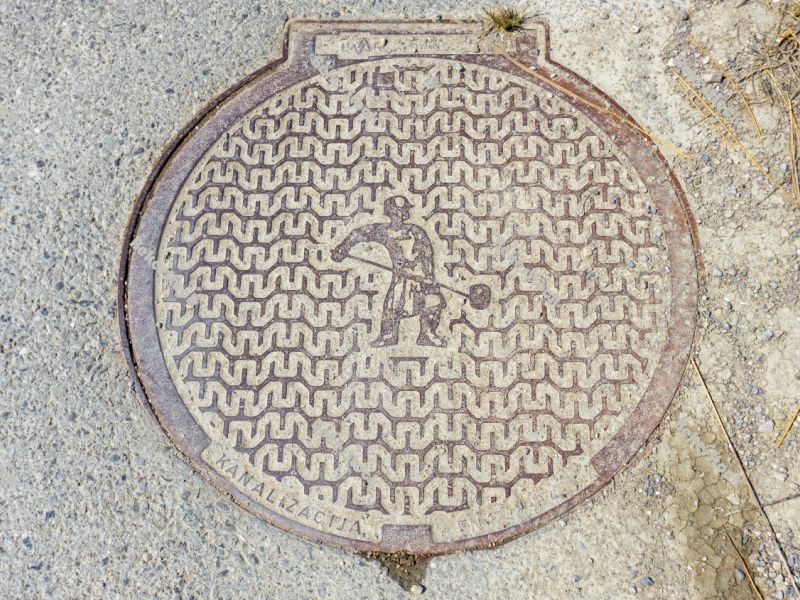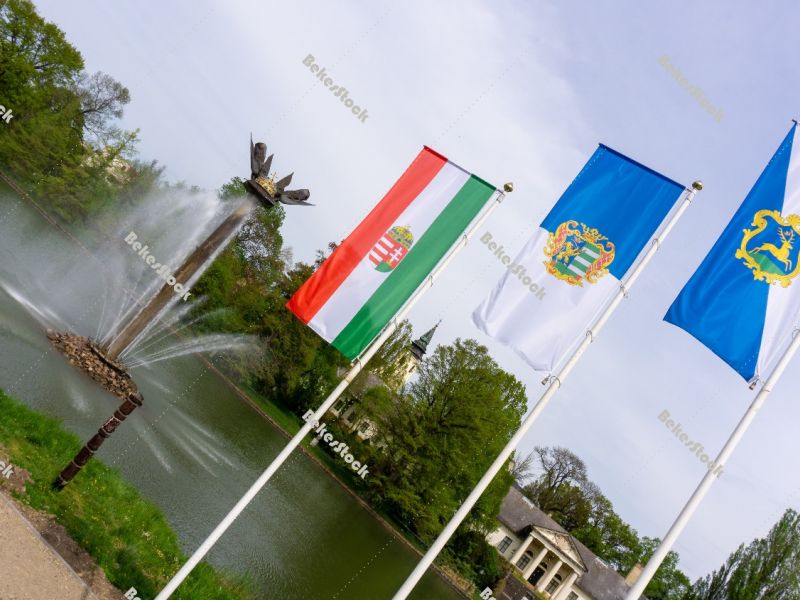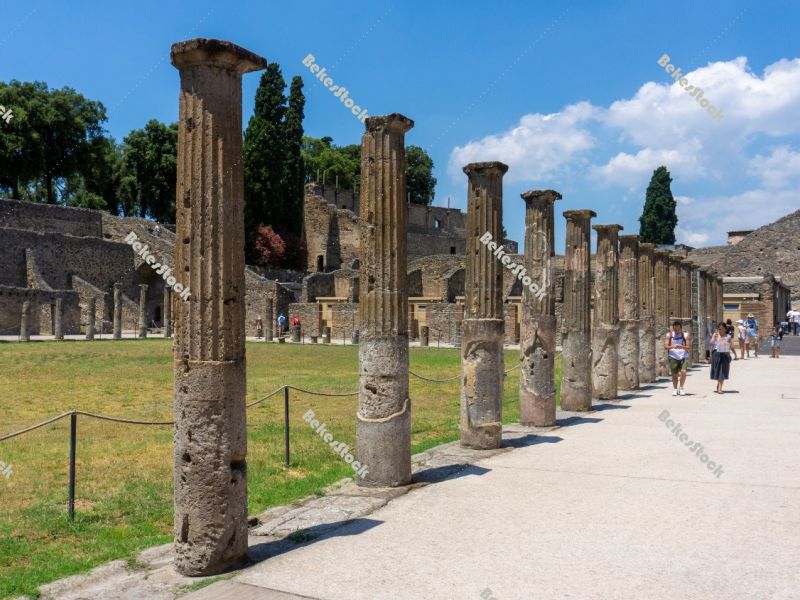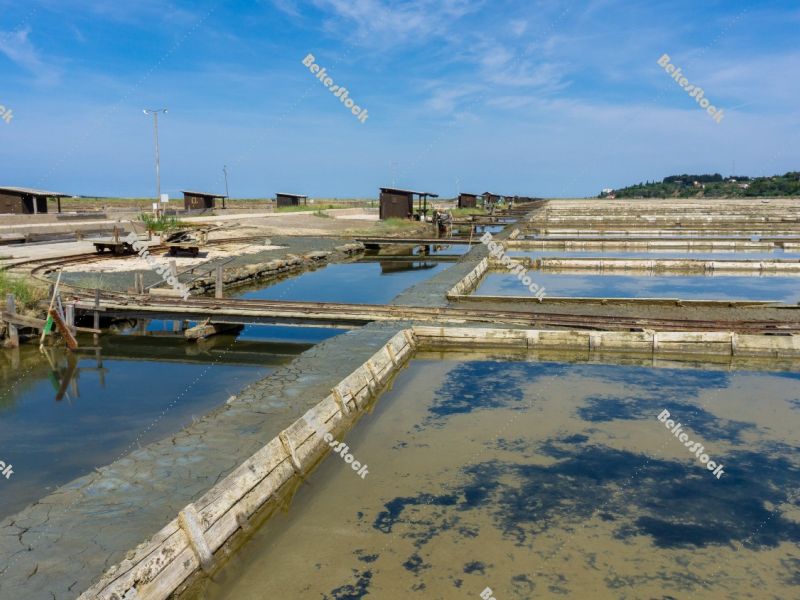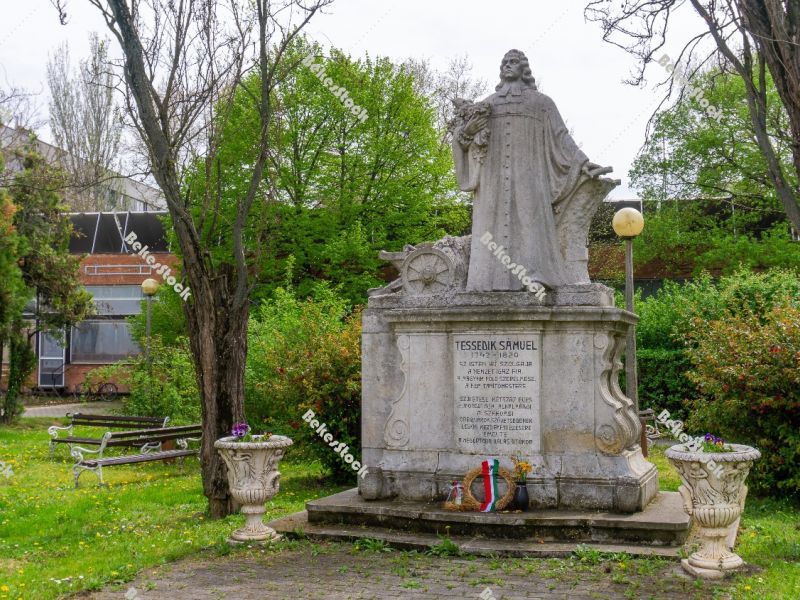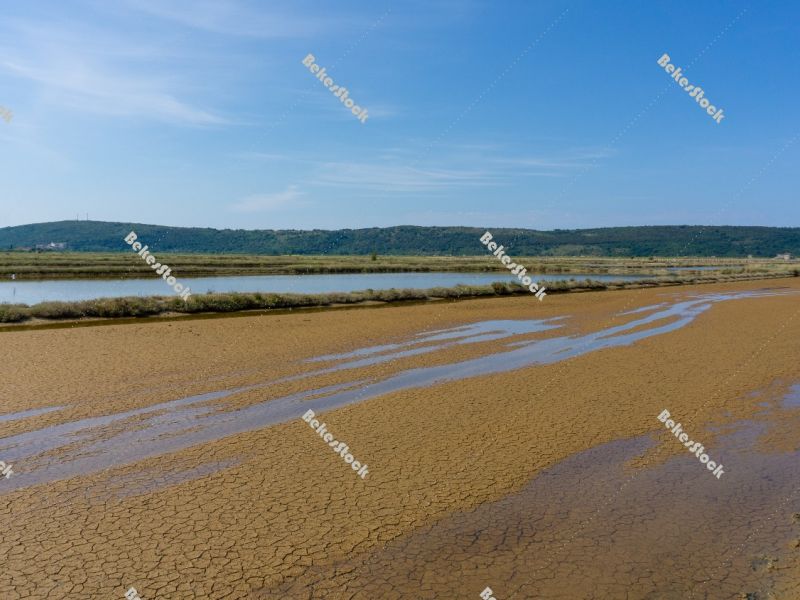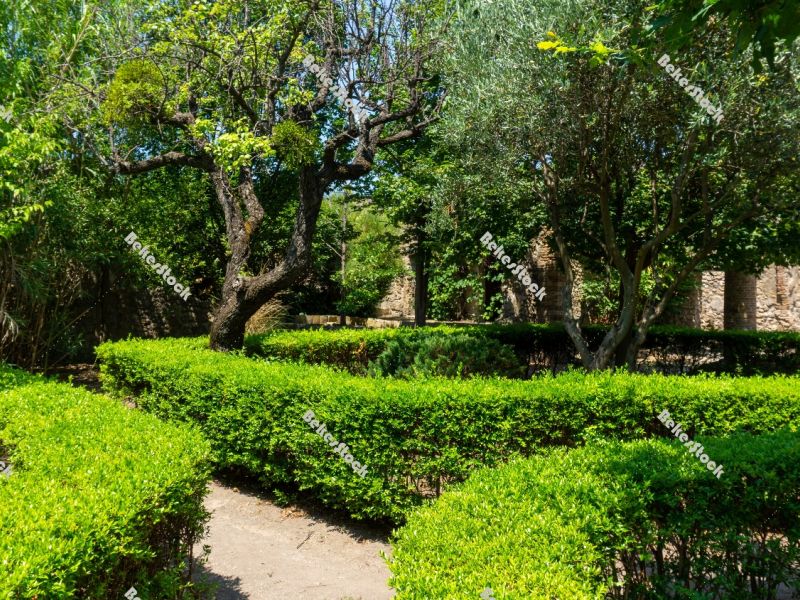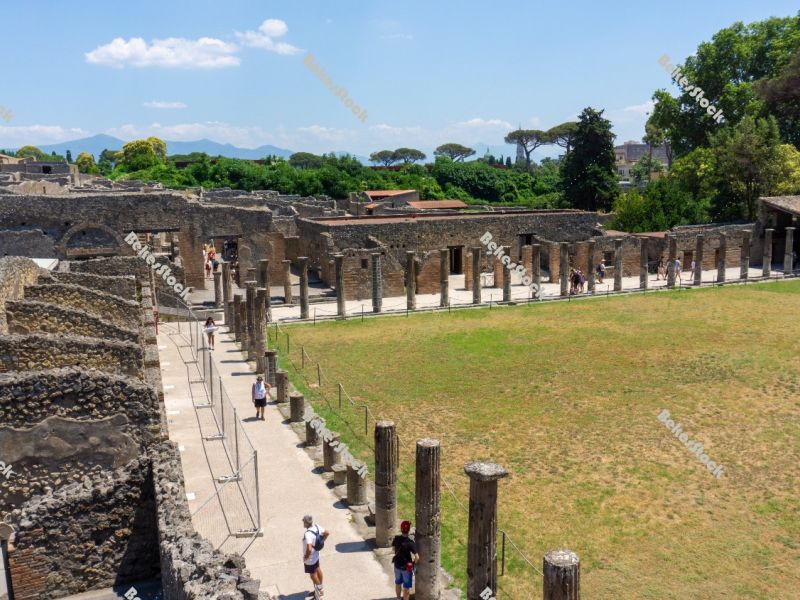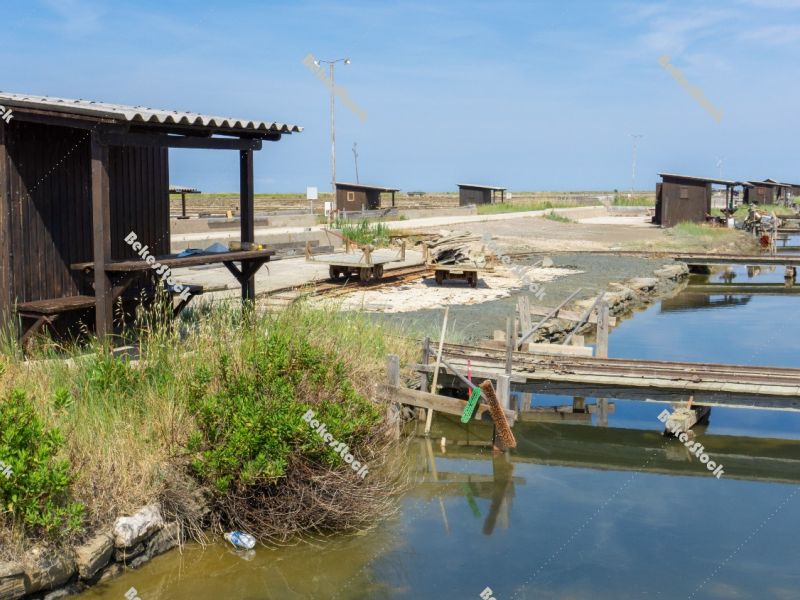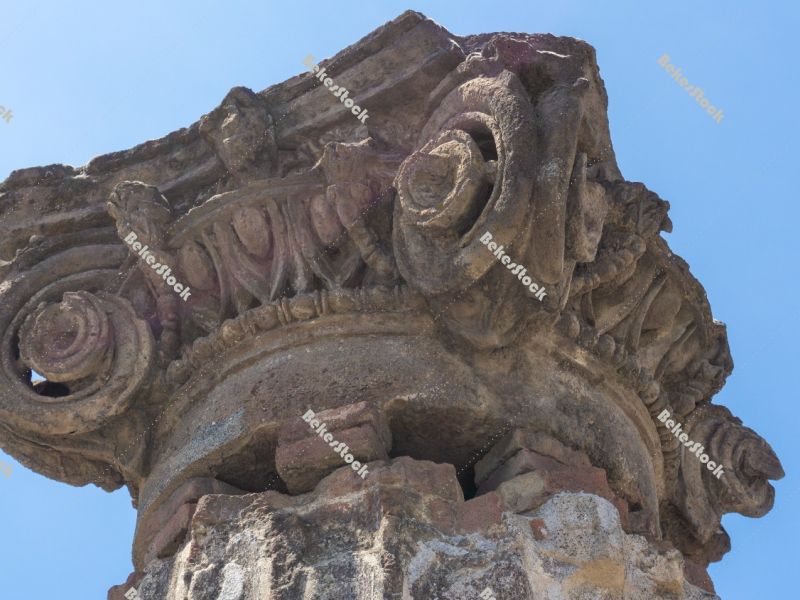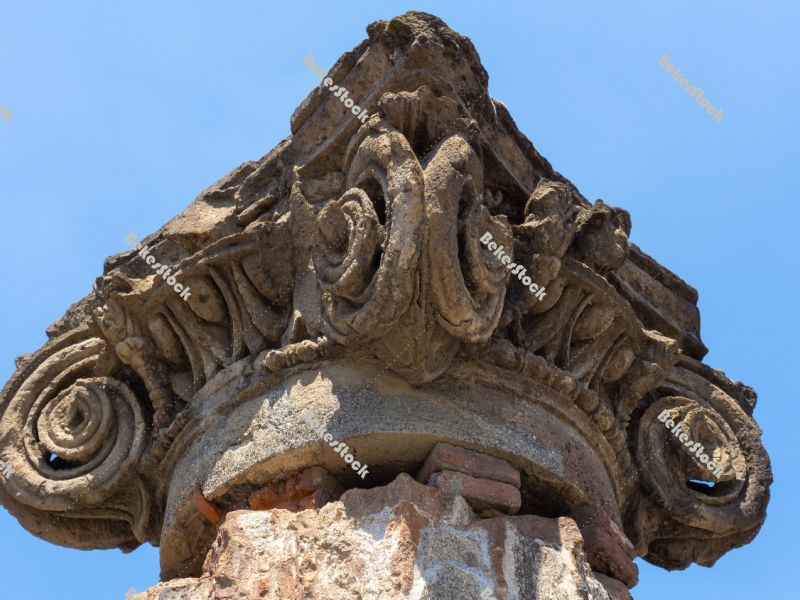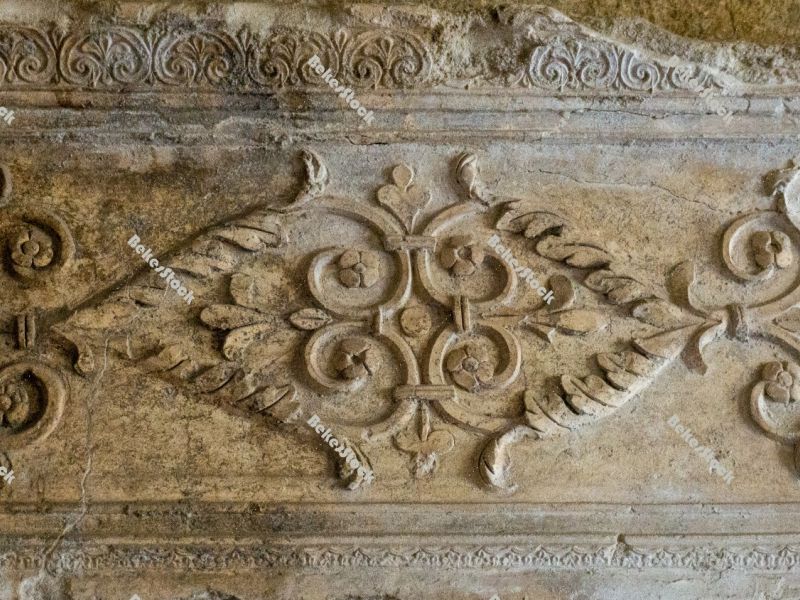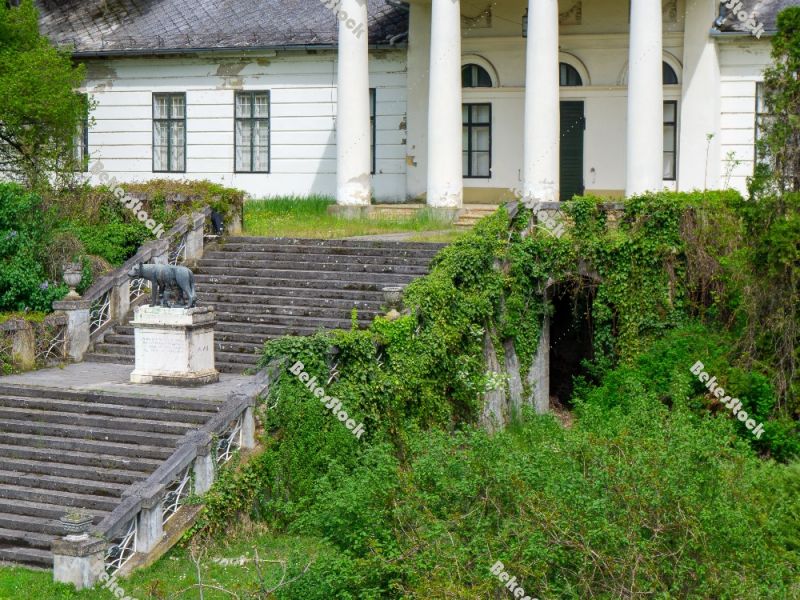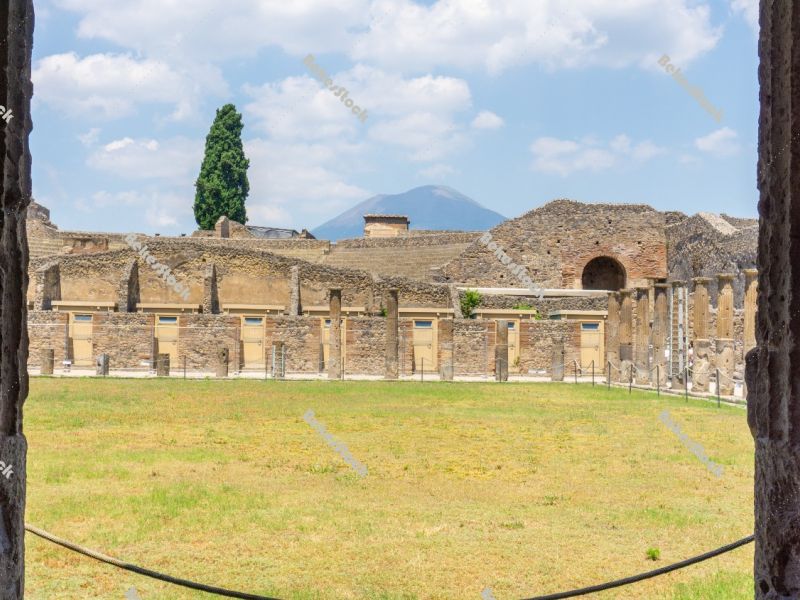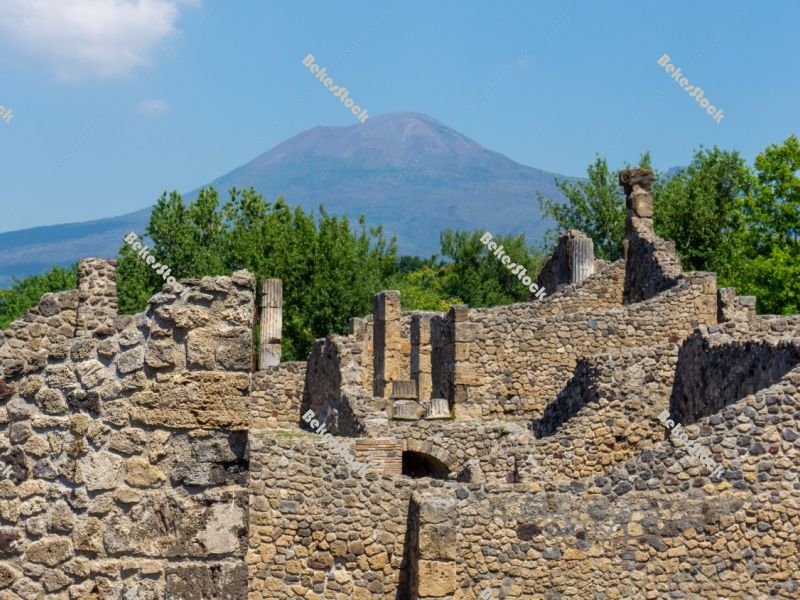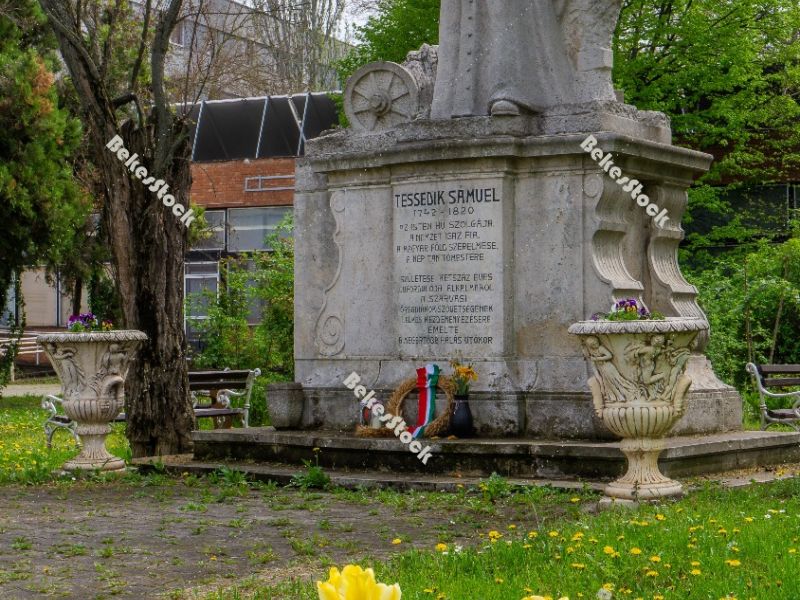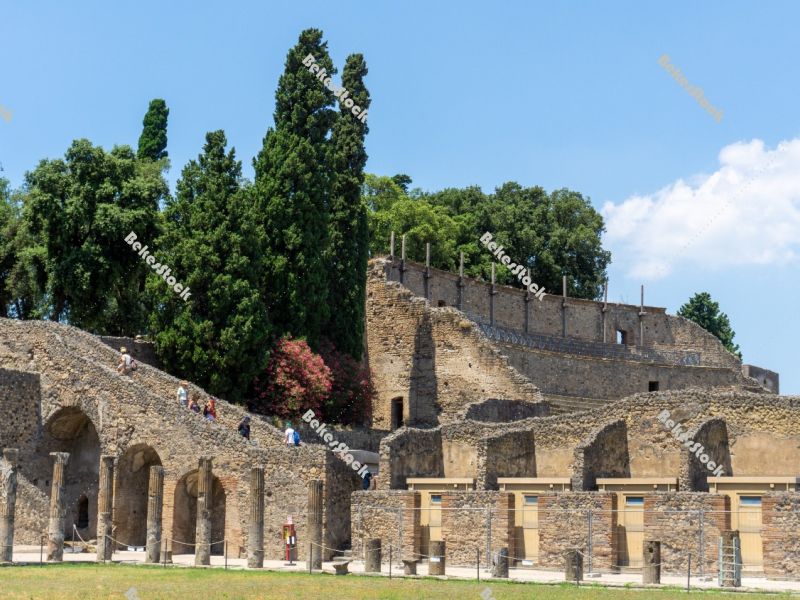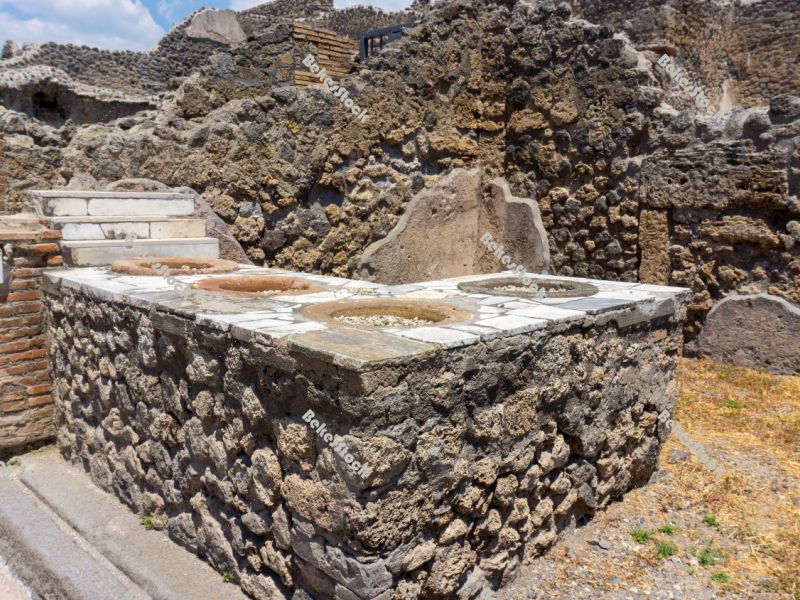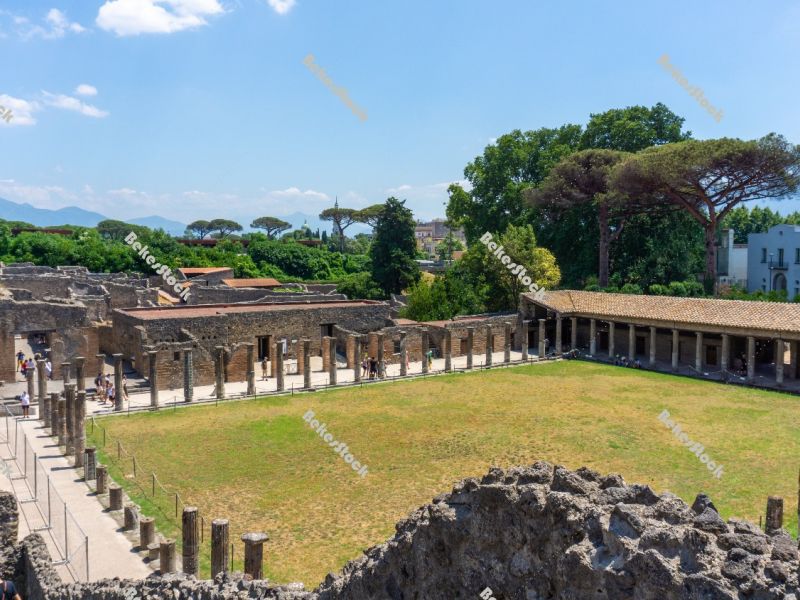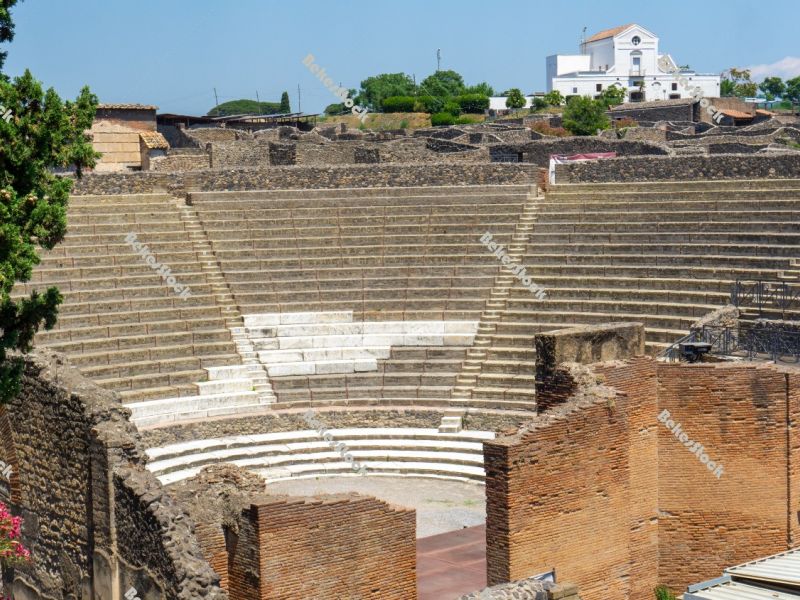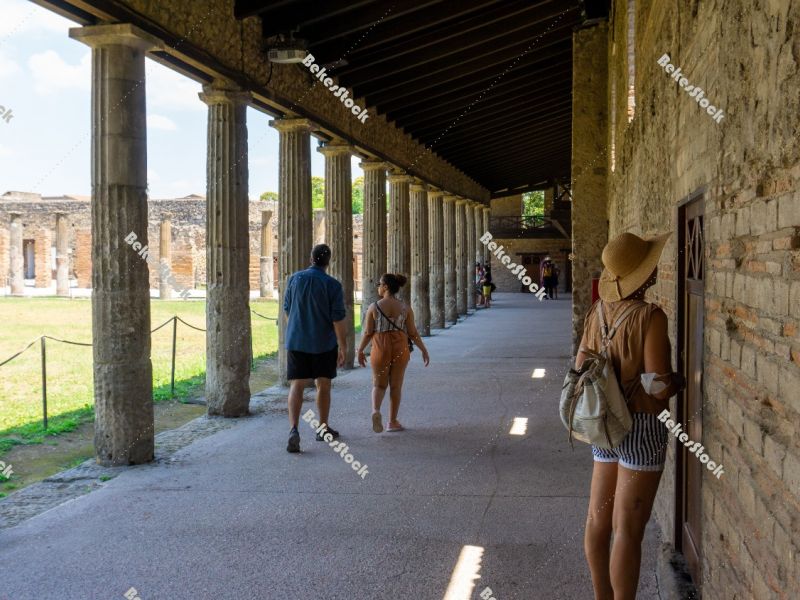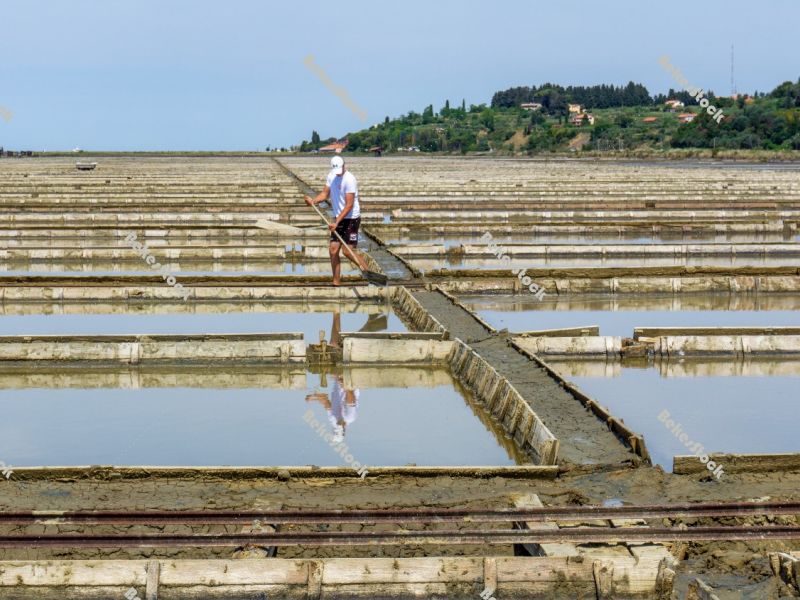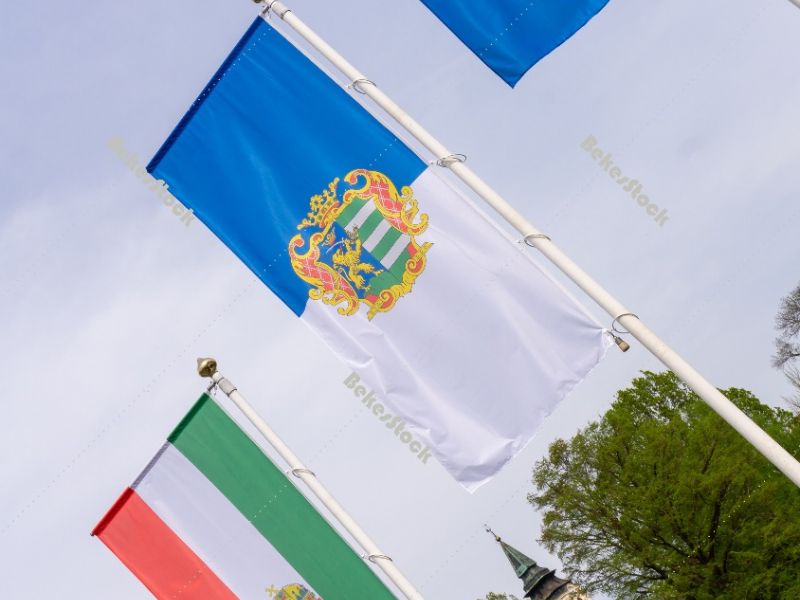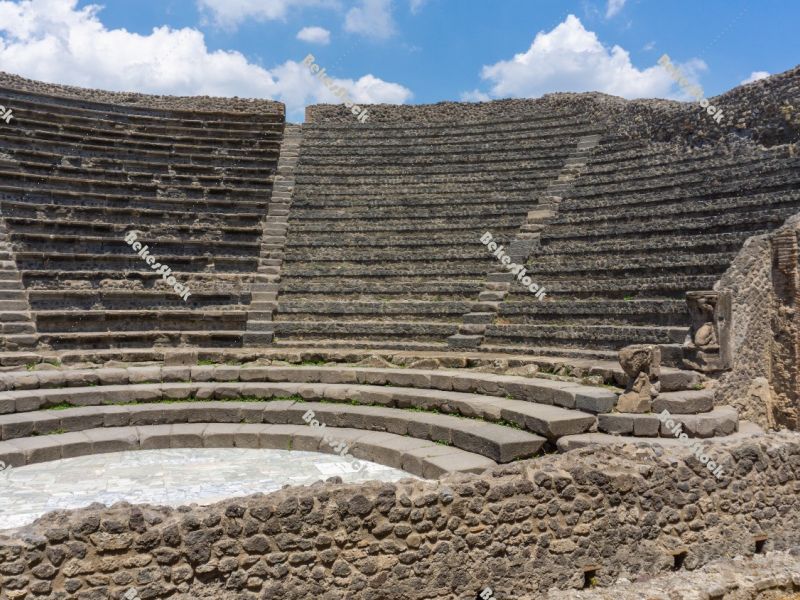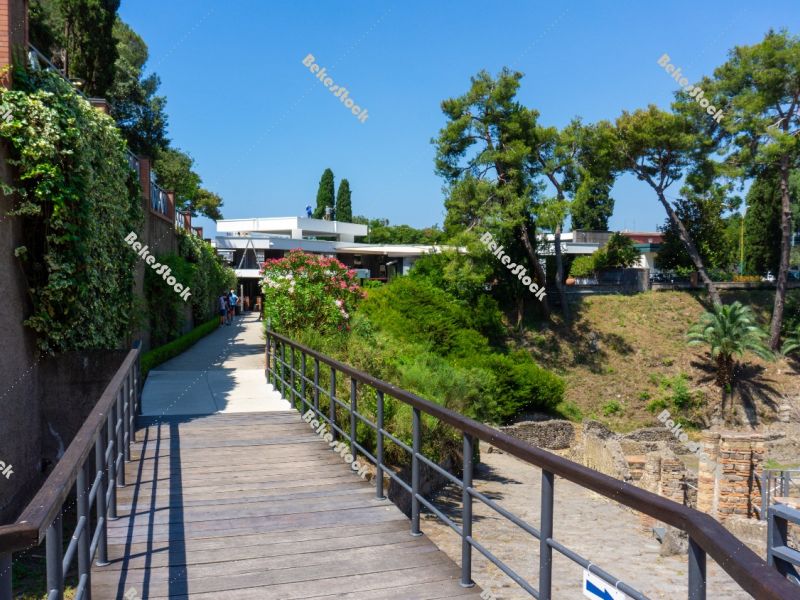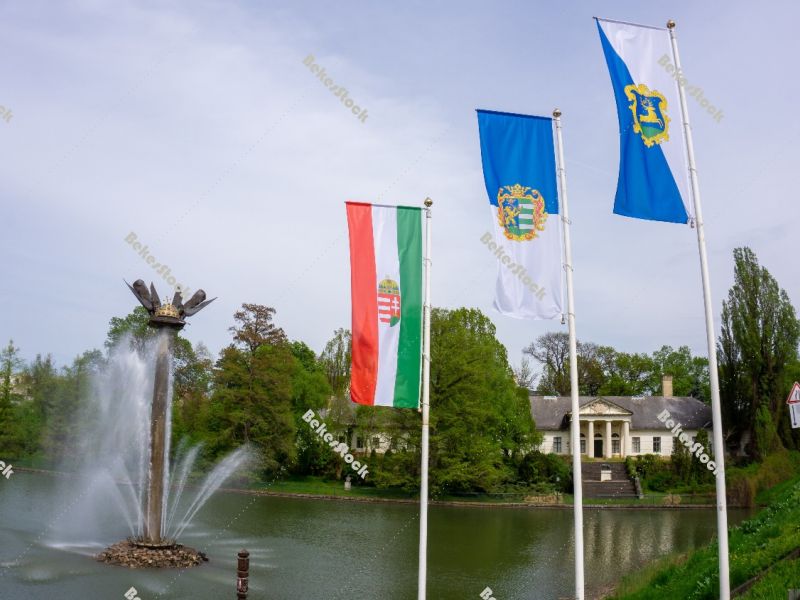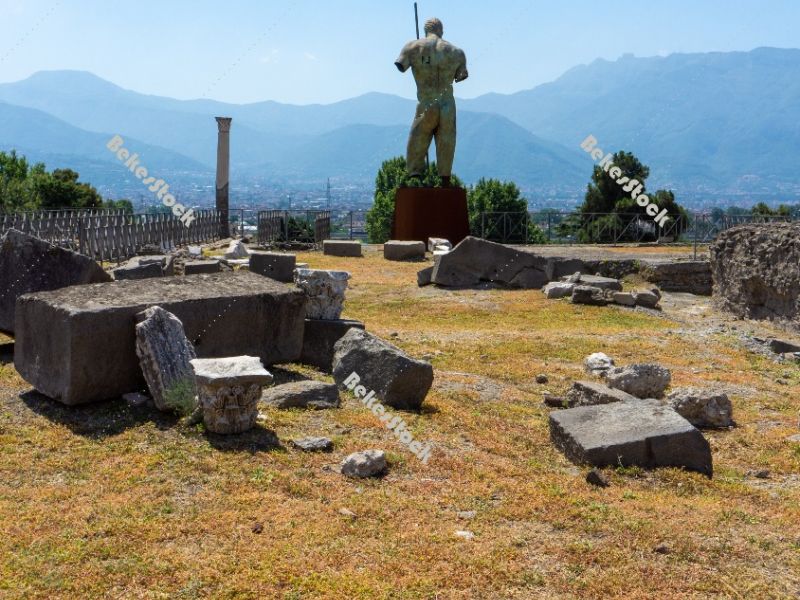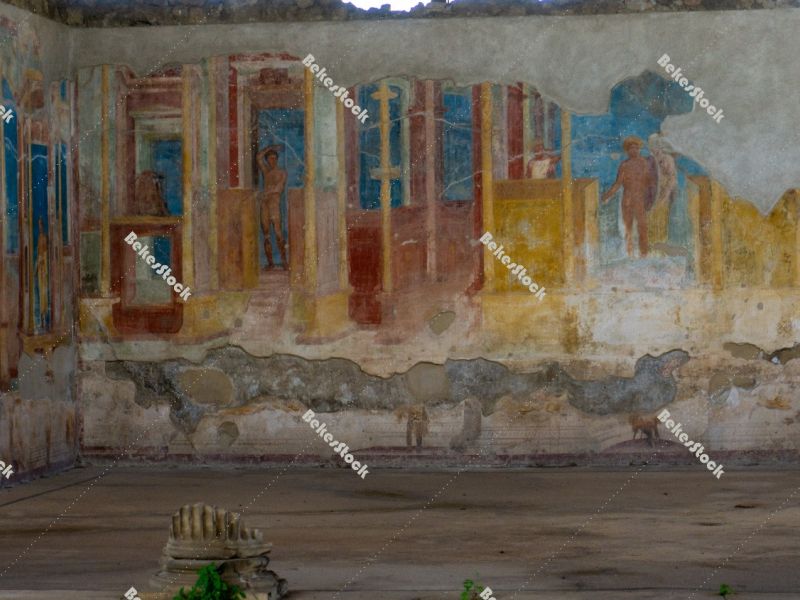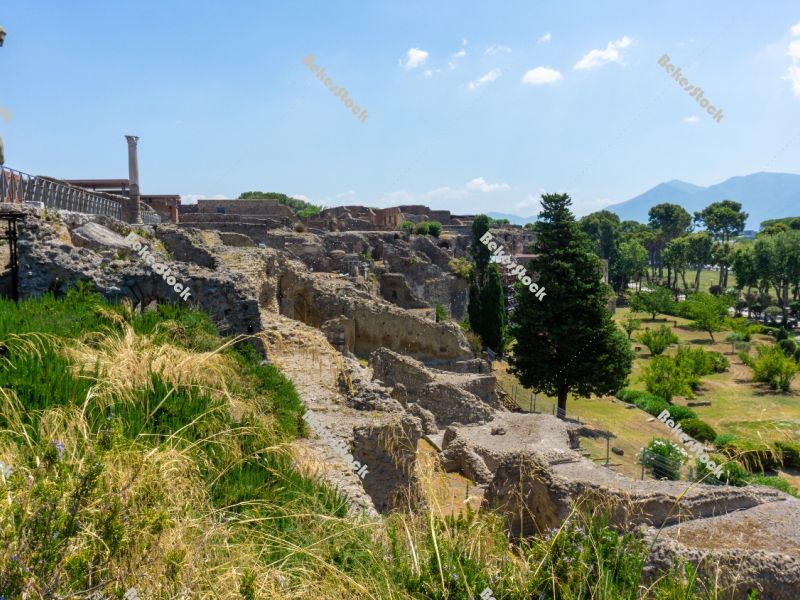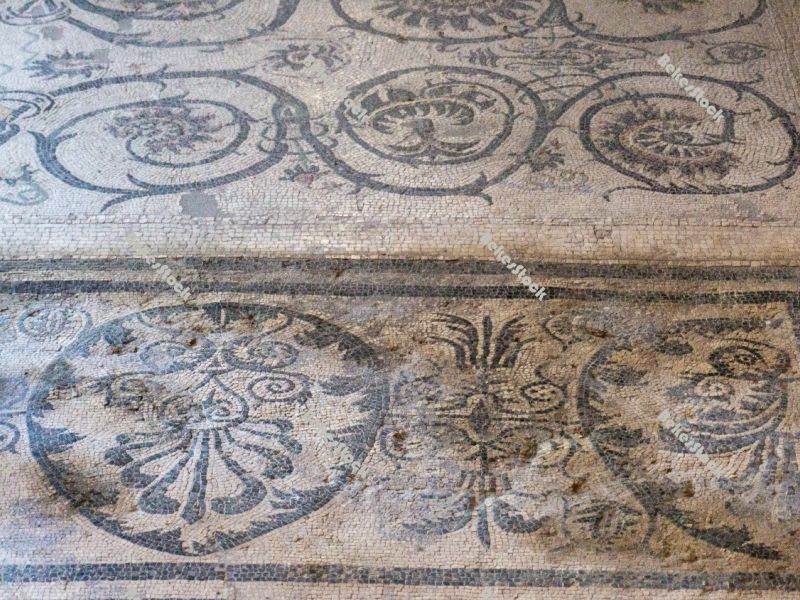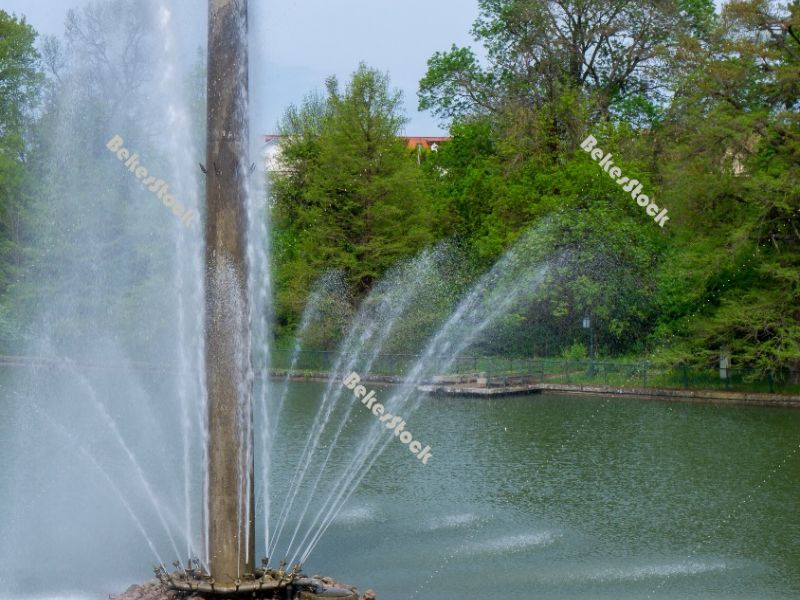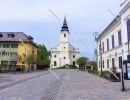Image Tags - history
-
The Suburban Baths in Pompeii. Pompei, Campania, Italy, July 202 The Suburban Baths in Pompeii. Pompei, Campania, Italy, July 202
The Suburban Baths in Pompeii. The Suburban Baths, located immediately beneath the Marina Gate, are built halfway along the walls, which during the 1st century BC had lost their defensive function. Unlike the Stabian Baths and those of the Forum, the Suburban Baths were private. There are small erotic paintings in the changing room (apodyterium) that advertise the activities held in the halls of the upper floor, probably intended for prostitution, as often happened, illegally, in the baths. The other thermal areas have sumptuous decorations. A waterfall flowed in the small cold pool from a fake cave, adorned with a mosaic depicting Cupids handing over their weapons to Mars, the walls were frescoed with paintings that reproduced naval battles and marine wildlife. Besides the normal sequence of rooms that range from the more moderate to the hottest, the section of the heated rooms also includes a large pool that is heated by means of a large bronze brazier, placed at the bottom. Pompeii was an ancient city located in what is now the comune of Pompei near Naples in the Campania region of Italy. Pompeii, along with Herculaneum and many villas in the surrounding area, was buried under 4 to 6 m of volcanic ash and pumice in the eruption of Mount Vesuvius in AD 79 (1st century). Pompei, Campania, Italy, July 2020. @csabaprog
csabaprog decay gods city tourist architectural sightseeing italian empire spa naples paved vesuvious building vesuvius old landmark excavation villa vacation town eruption rome historical disaster ruins 1st house history archaeology ancient tessellation catastrophe historic bella volcano roman dei journey mysteries trip vesuvio houses century suburban ruined europe ash scenary mount art walls died stone overlooked mediterranean unesco symbol misteri remains interior romanesque famous buried colorful excursion beautiful travel demolished decorated decoration napoli bath architecture tourism destroyed archeological italyThe Suburban Baths in Pompeii. The Suburban Baths, located immediately beneath the Marina Gate, are built halfway along the walls, which during the 1st century BC had lost their defensive function. Unlike the Stabian Baths and those of the Forum, the Suburban Baths were private. There are small erotic paintings in the changing room (apodyterium) that advertise the activities held in the halls of the upper floor, probably intended for prostitution, as often happened, illegally, in the baths. The other thermal areas have sumptuous decorations. A waterfall flowed in the small cold pool from a fake cave, adorned with a mosaic depicting Cupids handing over their weapons to Mars, the walls were frescoed with paintings that reproduced naval battles and marine wildlife. Besides the normal sequence of rooms that range from the more moderate to the hottest, the section of the heated rooms also includes a large pool that is heated by means of a large bronze brazier, placed at the bottom. Pompeii was an ancient city located in what is now the comune of Pompei near Naples in the Campania region of Italy. Pompeii, along with Herculaneum and many villas in the surrounding area, was buried under 4 to 6 m of volcanic ash and pumice in the eruption of Mount Vesuvius in AD 79 (1st century). Pompei, Campania, Italy, July 2020. @csabaprog
csabaprog decay gods city tourist architectural sightseeing italian empire spa naples paved vesuvious building vesuvius old landmark excavation villa vacation town eruption rome historical disaster ruins 1st house history archaeology ancient tessellation catastrophe historic bella volcano roman dei journey mysteries trip vesuvio houses century suburban ruined europe ash scenary mount art walls died stone overlooked mediterranean unesco symbol misteri remains interior romanesque famous buried colorful excursion beautiful travel demolished decorated decoration napoli bath architecture tourism destroyed archeological italy -
Detail of a fresco in the Suburban Baths in Pompeii. Pompei, Cam Detail of a fresco in the Suburban Baths in Pompeii. Pompei, Cam
Detail of a fresco in the Suburban Baths in Pompeii. The Suburban Baths, located immediately beneath the Marina Gate. The Suburban Baths were private. The thermal areas have sumptuous decorations. Pompeii was an ancient city located in what is now the comune of Pompei near Naples in the Campania region of Italy. Pompeii, along with Herculaneum and many villas in the surrounding area, was buried under 4 to 6 m of volcanic ash and pumice in the eruption of Mount Vesuvius in AD 79 (1st century). Pompei, Campania, Italy, July 2020. @csabaprog
csabaprog ruin decay gods city tourist architectural sightseeing italian empire ash paved houses landscape vesuvius old pompeii excavation villa vacation town eruption rome paint symbol disaster ruins 1st house history archaeology ancient historical catastrophe destroyed building europe architecture vesuvious italy july 2020 touristic vesuvio volcano mysteries remains region mural roman interior murals dei colorful journey misteri trip view famous campania wall painting stone ruined naples napoli scenary mount art bella died european century mediterranean outdoor historic overlooked demolished pompei romanesque exterior buried unesco excursion beautiful travel summer decorated decoration walls fresco holiday tourism landmark archeologicalDetail of a fresco in the Suburban Baths in Pompeii. The Suburban Baths, located immediately beneath the Marina Gate. The Suburban Baths were private. The thermal areas have sumptuous decorations. Pompeii was an ancient city located in what is now the comune of Pompei near Naples in the Campania region of Italy. Pompeii, along with Herculaneum and many villas in the surrounding area, was buried under 4 to 6 m of volcanic ash and pumice in the eruption of Mount Vesuvius in AD 79 (1st century). Pompei, Campania, Italy, July 2020. @csabaprog
csabaprog ruin decay gods city tourist architectural sightseeing italian empire ash paved houses landscape vesuvius old pompeii excavation villa vacation town eruption rome paint symbol disaster ruins 1st house history archaeology ancient historical catastrophe destroyed building europe architecture vesuvious italy july 2020 touristic vesuvio volcano mysteries remains region mural roman interior murals dei colorful journey misteri trip view famous campania wall painting stone ruined naples napoli scenary mount art bella died european century mediterranean outdoor historic overlooked demolished pompei romanesque exterior buried unesco excursion beautiful travel summer decorated decoration walls fresco holiday tourism landmark archeological -
Millenium Memorial (`Milleniumi Emlékmű`) and Bolza Castle (`B Millenium Memorial (`Milleniumi Emlékmű`) and Bolza Castle (`B
Millenium Memorial (`Milleniumi Emlékmű`) and Bolza Castle (`Bolza-kastély`). It was inaugurated in 2000 which marks the millenial anniversary of the foundation of the State. The copper monument which stands on a robust metal column emerges from the River Körös and reaches up 10 metres. Szarvas, Bekes county (Bekes megye), Hungary, May 2021. @bekesstock @csabaprog
hungary csabaprog holy crown crown bekes county bekesstock plant national holt state remus bekes fountains tradition landscape 2021 landmark foundation vacation canal holt-körös nation fountain cloud history green anniversary memorial koros folyo water monument cultural szarvas emlékmű tree column may körös castle jubilee cloudy view tourism szarvas town outdoor bekes megye copper attraction honour garden exterior river romulus spring statue travel famous szarvastown millenium water fountain channel bolza europe szarvasvaros historical szarvasvárosMillenium Memorial (`Milleniumi Emlékmű`) and Bolza Castle (`Bolza-kastély`). It was inaugurated in 2000 which marks the millenial anniversary of the foundation of the State. The copper monument which stands on a robust metal column emerges from the River Körös and reaches up 10 metres. Szarvas, Bekes county (Bekes megye), Hungary, May 2021. @bekesstock @csabaprog
hungary csabaprog holy crown crown bekes county bekesstock plant national holt state remus bekes fountains tradition landscape 2021 landmark foundation vacation canal holt-körös nation fountain cloud history green anniversary memorial koros folyo water monument cultural szarvas emlékmű tree column may körös castle jubilee cloudy view tourism szarvas town outdoor bekes megye copper attraction honour garden exterior river romulus spring statue travel famous szarvastown millenium water fountain channel bolza europe szarvasvaros historical szarvasváros -
Courtyard of a building in Pompeii, with Lenader and the blue sk Courtyard of a building in Pompeii, with Lenader and the blue sk
Courtyard of a building in Pompeii, with Lenader and the blue sky in the background. Pompeii was an ancient city located in what is now the comune of Pompei near Naples in the Campania region of Italy. Pompeii, along with Herculaneum and many villas in the surrounding area, was buried under 4 to 6 m of volcanic ash and pumice in the eruption of Mount Vesuvius in AD 79 (1st century). Pompei, Campania, Italy, July 2020. @csabaprog
csabaprog decay gods city tourist architectural sightseeing italian walls sky paved houses building vesuvius old landmark excavation villa vacation town eruption rome symbol disaster ruins 1st house history archaeology demolished catastrophe destroyed bella volcano leander roman journey mysteries trip vesuvio historic vesuvious europe ruined architecture courtyyard scenary mount misteri overlooked died ash century mediterranean unesco buried remains interior ancient romanesque famous blue colorful excursion beautiful travel empire decorated decoration naples stone napoli tourism historical archeological italyCourtyard of a building in Pompeii, with Lenader and the blue sky in the background. Pompeii was an ancient city located in what is now the comune of Pompei near Naples in the Campania region of Italy. Pompeii, along with Herculaneum and many villas in the surrounding area, was buried under 4 to 6 m of volcanic ash and pumice in the eruption of Mount Vesuvius in AD 79 (1st century). Pompei, Campania, Italy, July 2020. @csabaprog
csabaprog decay gods city tourist architectural sightseeing italian walls sky paved houses building vesuvius old landmark excavation villa vacation town eruption rome symbol disaster ruins 1st house history archaeology demolished catastrophe destroyed bella volcano leander roman journey mysteries trip vesuvio historic vesuvious europe ruined architecture courtyyard scenary mount misteri overlooked died ash century mediterranean unesco buried remains interior ancient romanesque famous blue colorful excursion beautiful travel empire decorated decoration naples stone napoli tourism historical archeological italy -
Millenium Memorial (`Milleniumi Emlékmű`) - Szarvas, Bekes Cou Millenium Memorial (`Milleniumi Emlékmű`) - Szarvas, Bekes Cou
Millenium Memorial (`Milleniumi Emlékmű`). It was inaugurated in 2000 which marks the millenial anniversary of the foundation of the State. The copper monument which stands on a robust metal column emerges from the River Körös and reaches up 10 metres. Szarvas, Bekes county (Bekes megye), Hungary, May 2021. @bekesstock @csabaprog
hungary csabaprog koros europe copper folyo water szarvastown tourism szarvas town cultural crown bekes county bekesstock millenium column bekes megye national attraction tree emlékmű river state view travel statue water fountain may bekes memorial fountains holt-körös tradition szarvas landscape 2021 exterior cloudy landmark spring foundation outdoor vacation körös jubilee honour garden famous canal historical plant nation fountain cloud holy crown history monument green holt anniversary szarvasvaros channel szarvasvárosMillenium Memorial (`Milleniumi Emlékmű`). It was inaugurated in 2000 which marks the millenial anniversary of the foundation of the State. The copper monument which stands on a robust metal column emerges from the River Körös and reaches up 10 metres. Szarvas, Bekes county (Bekes megye), Hungary, May 2021. @bekesstock @csabaprog
hungary csabaprog koros europe copper folyo water szarvastown tourism szarvas town cultural crown bekes county bekesstock millenium column bekes megye national attraction tree emlékmű river state view travel statue water fountain may bekes memorial fountains holt-körös tradition szarvas landscape 2021 exterior cloudy landmark spring foundation outdoor vacation körös jubilee honour garden famous canal historical plant nation fountain cloud holy crown history monument green holt anniversary szarvasvaros channel szarvasváros -
The door is a brick ceiling in the Suburban Baths in Pompeii. Po The door is a brick ceiling in the Suburban Baths in Pompeii. Po
The door is a brick ceiling in the Suburban Baths. The Suburban Baths, located immediately beneath the Marina Gate. The Suburban Baths were private. The thermal areas have sumptuous decorations. Pompeii was an ancient city located in what is now the comune of Pompei near Naples in the Campania region of Italy. Pompeii, along with Herculaneum and many villas in the surrounding area, was buried under 4 to 6 m of volcanic ash and pumice in the eruption of Mount Vesuvius in AD 79 (1st century). Pompei, Campania, Italy, July 2020. @csabaprog
csabaprog decay city tourist architectural sightseeing italian empire naples paved houses building vesuvius old landmark excavation villa vacation town eruption rome historical disaster ruins 1st house history napoli demolished catastrophe destroyed bella volcano roman ceiling journey misteri trip vesuvio wall archaeology stone vesuvious europe scenary mount brick overlooked died mysteries century mediterranean walls remains colorful ancient historic romanesque famous buried unesco excursion beautiful travel interior decorated decoration architecture ash symbol tourism ruined archeological italyThe door is a brick ceiling in the Suburban Baths. The Suburban Baths, located immediately beneath the Marina Gate. The Suburban Baths were private. The thermal areas have sumptuous decorations. Pompeii was an ancient city located in what is now the comune of Pompei near Naples in the Campania region of Italy. Pompeii, along with Herculaneum and many villas in the surrounding area, was buried under 4 to 6 m of volcanic ash and pumice in the eruption of Mount Vesuvius in AD 79 (1st century). Pompei, Campania, Italy, July 2020. @csabaprog
csabaprog decay city tourist architectural sightseeing italian empire naples paved houses building vesuvius old landmark excavation villa vacation town eruption rome historical disaster ruins 1st house history napoli demolished catastrophe destroyed bella volcano roman ceiling journey misteri trip vesuvio wall archaeology stone vesuvious europe scenary mount brick overlooked died mysteries century mediterranean walls remains colorful ancient historic romanesque famous buried unesco excursion beautiful travel interior decorated decoration architecture ash symbol tourism ruined archeological italy -
Bolza Castle (`Bolza-kastély`). Szarvas, Bekes County, Hungary Bolza Castle (`Bolza-kastély`). Szarvas, Bekes County, Hungary
Bolza Castle (`Bolza-kastély`). The Bolza family was of Italian origin and settled in Hungary in the 18th century through marriage. Over the years they assimilated and became highly respected by the citizens of Szarvas. As a matter of fact, the Bolza family left behind a rich legacy, the most spectacular of which is the Bolza Castle. At the bottom of the stairs – as a remainder of the family’s Italian origin – Pál Bolza erected a replica of the wolf statue of Romulus and Remus, the legendary founders of Rome. Szarvas, Bekes county (Bekes megye), Hungary, May 2021. @bekesstock @csabaprog
hungary spring szarvastown cultural wolf bekes county bekesstock stairs szarvas italian mansion remus may bekes bekes megye view castle tradition szarvas town landscape 2021 tourism replica landmark building csabaprog outdoor vacation exterior town romulus rome famous bolza pál historical citizen palace travel statue house history citizens family bolza europe szarvasvaros renovated szarvasvárosBolza Castle (`Bolza-kastély`). The Bolza family was of Italian origin and settled in Hungary in the 18th century through marriage. Over the years they assimilated and became highly respected by the citizens of Szarvas. As a matter of fact, the Bolza family left behind a rich legacy, the most spectacular of which is the Bolza Castle. At the bottom of the stairs – as a remainder of the family’s Italian origin – Pál Bolza erected a replica of the wolf statue of Romulus and Remus, the legendary founders of Rome. Szarvas, Bekes county (Bekes megye), Hungary, May 2021. @bekesstock @csabaprog
hungary spring szarvastown cultural wolf bekes county bekesstock stairs szarvas italian mansion remus may bekes bekes megye view castle tradition szarvas town landscape 2021 tourism replica landmark building csabaprog outdoor vacation exterior town romulus rome famous bolza pál historical citizen palace travel statue house history citizens family bolza europe szarvasvaros renovated szarvasváros -
GYMNASIUM OF THE IUVENES. The entrance of the Gymnasium is locat GYMNASIUM OF THE IUVENES. The entrance of the Gymnasium is locat
GYMNASIUM OF THE IUVENES (`PALESTRA DEGLI IUVENES`). The entrance of the Gymnasium is located in Vicolo della Regina. On the walls, the frescos portray athletes, wrestlers, a jumper with dumbbells, and the competition judge, known as the Ludi Magister, carrying a sash for the winner. This huge space was part of a thermal bath for men that dates back to the 1 st century A.D. and was located in a scenic area of the town with wonderful sea view. Pompeii was an ancient city located in what is now the comune of Pompei near Naples in the Campania region of Italy. Pompeii, along with Herculaneum and many villas in the surrounding area, was buried under 4 to 6 m of volcanic ash and pumice in the eruption of Mount Vesuvius in AD 79 (1st century). Pompei, Campania, Italy, July 2020. @csabaprog
csabaprog decay gods city tourist architectural sightseeing italian empire ash paved houses building vesuvius old landmark excavation villa vacation town eruption rome historical disaster ruins 1st house history archaeology demolished athletes historic bella volcano wrestlers roman destroyed journey misteri gymnasium vesuvio vesuvious europe vicolo ruined stone walls architecture scenary mount mysteries iuvenes died naples overlooked mediterranean catastrophe century ancient interior remains romanesque famous buried colorful excursion beautiful travel unesco decorated decoration symbol fresco trip tourism napoli archeological italyGYMNASIUM OF THE IUVENES (`PALESTRA DEGLI IUVENES`). The entrance of the Gymnasium is located in Vicolo della Regina. On the walls, the frescos portray athletes, wrestlers, a jumper with dumbbells, and the competition judge, known as the Ludi Magister, carrying a sash for the winner. This huge space was part of a thermal bath for men that dates back to the 1 st century A.D. and was located in a scenic area of the town with wonderful sea view. Pompeii was an ancient city located in what is now the comune of Pompei near Naples in the Campania region of Italy. Pompeii, along with Herculaneum and many villas in the surrounding area, was buried under 4 to 6 m of volcanic ash and pumice in the eruption of Mount Vesuvius in AD 79 (1st century). Pompei, Campania, Italy, July 2020. @csabaprog
csabaprog decay gods city tourist architectural sightseeing italian empire ash paved houses building vesuvius old landmark excavation villa vacation town eruption rome historical disaster ruins 1st house history archaeology demolished athletes historic bella volcano wrestlers roman destroyed journey misteri gymnasium vesuvio vesuvious europe vicolo ruined stone walls architecture scenary mount mysteries iuvenes died naples overlooked mediterranean catastrophe century ancient interior remains romanesque famous buried colorful excursion beautiful travel unesco decorated decoration symbol fresco trip tourism napoli archeological italy -
Alley way (`vicolo`) in Pompeii. The narrow street is lined with Alley way (`vicolo`) in Pompeii. The narrow street is lined with
Alley way (`vicolo`) in Pompeii. The narrow street is lined with brick walls. Pompeii was an ancient city located in what is now the comune of Pompei near Naples in the Campania region of Italy. Pompeii, along with Herculaneum and many villas in the surrounding area, was buried under 4 to 6 m of volcanic ash and pumice in the eruption of Mount Vesuvius in AD 79 (1st century). Pompei, Naples (Napoli), Campania, Italy, July 2020. @csabaprog
csabaprog decay street city tourist architectural sightseeing italian empire naples paved vesuvious building vesuvius old landmark excavation vacation town eruption rome symbol disaster ruins 1st house history archaeology demolished catastrophe destroyed volcano roman way journey trip vesuvio wall vicolo ruined historic scenary mount napoli europe died overlooked century mediterranean architecture ash ancient unesco houses romanesque alley buried colorful excursion beautiful travel stone landscape remains famous walls historical tourism brick archeological italyAlley way (`vicolo`) in Pompeii. The narrow street is lined with brick walls. Pompeii was an ancient city located in what is now the comune of Pompei near Naples in the Campania region of Italy. Pompeii, along with Herculaneum and many villas in the surrounding area, was buried under 4 to 6 m of volcanic ash and pumice in the eruption of Mount Vesuvius in AD 79 (1st century). Pompei, Naples (Napoli), Campania, Italy, July 2020. @csabaprog
csabaprog decay street city tourist architectural sightseeing italian empire naples paved vesuvious building vesuvius old landmark excavation vacation town eruption rome symbol disaster ruins 1st house history archaeology demolished catastrophe destroyed volcano roman way journey trip vesuvio wall vicolo ruined historic scenary mount napoli europe died overlooked century mediterranean architecture ash ancient unesco houses romanesque alley buried colorful excursion beautiful travel stone landscape remains famous walls historical tourism brick archeological italy -
Statue of Tessedik (`Tessedik szobor`). Szarvas, Bekes County, H Statue of Tessedik (`Tessedik szobor`). Szarvas, Bekes County, H
Statue of Tessedik (`Tessedik szobor`). Samuel Tessedik (1742-1820) lived in Szarvas from 1767 until his death. In 1780 he founded the first economic school in Europe, where he taught theoretical and practical knowledge to peasant children. Szarvas, Bekes county (Bekes megye), Hungary, May 2021. @bekesstock @csabaprog
hungary csabaprog nature szarvastown city tourist bekes county bekesstock bekes megye national attraction tree outdoors may bekes view garland 2021 landmark honour pastor tourism vacation monument szarvas town spring culture famous nation arts travel statue jubilee szarvas wreath history historical stone school anniversary szarvasvaros europe szarvasvárosStatue of Tessedik (`Tessedik szobor`). Samuel Tessedik (1742-1820) lived in Szarvas from 1767 until his death. In 1780 he founded the first economic school in Europe, where he taught theoretical and practical knowledge to peasant children. Szarvas, Bekes county (Bekes megye), Hungary, May 2021. @bekesstock @csabaprog
hungary csabaprog nature szarvastown city tourist bekes county bekesstock bekes megye national attraction tree outdoors may bekes view garland 2021 landmark honour pastor tourism vacation monument szarvas town spring culture famous nation arts travel statue jubilee szarvas wreath history historical stone school anniversary szarvasvaros europe szarvasváros -
Manhole cover with salt worker illustration. Saltworks `soline` Manhole cover with salt worker illustration. Saltworks `soline`
Manhole cover with salt worker illustration. Salt pan, saltworks `soline` in Sečovlje - Sicciole. At Sečovlje Salina Nature Park, the past and present still walk hand in hand. The ancient method of salt-making, learnt ages ago by the Piran salt-workers from their teachers, the salters from Pag Island, is still something special, even in the entire Mediterranean. Sečovlje Salina Nature Park. Sečovlje - Sicciole, Portoroz, Obalno-kraska, Slovenia, June 2020. @csabaprog
evaporation csabaprog workers pans manhole city grungy obalno-kraska summer portoroz salt-making spa metal flat tradition basin landscape old landmark cover vacation sicciole production construction salt pan history sečovlje saltworks ancient sunny detail crystallization produce bronze nature drain balkan coast mineral 2020 background fertilization sea gutter waste adriatic grunge june touristic dirty istria europe hatch dirt salty soline cast asphalt piran salt mines adria mines industrial adriatic sea method drying gutter cover largest duct mediterranean outdoor attraction clouds extraction salina saline exterior slovenia iron underground water travel transport salt-workers salters manhole cover park steel tourism salt pan seasideManhole cover with salt worker illustration. Salt pan, saltworks `soline` in Sečovlje - Sicciole. At Sečovlje Salina Nature Park, the past and present still walk hand in hand. The ancient method of salt-making, learnt ages ago by the Piran salt-workers from their teachers, the salters from Pag Island, is still something special, even in the entire Mediterranean. Sečovlje Salina Nature Park. Sečovlje - Sicciole, Portoroz, Obalno-kraska, Slovenia, June 2020. @csabaprog
evaporation csabaprog workers pans manhole city grungy obalno-kraska summer portoroz salt-making spa metal flat tradition basin landscape old landmark cover vacation sicciole production construction salt pan history sečovlje saltworks ancient sunny detail crystallization produce bronze nature drain balkan coast mineral 2020 background fertilization sea gutter waste adriatic grunge june touristic dirty istria europe hatch dirt salty soline cast asphalt piran salt mines adria mines industrial adriatic sea method drying gutter cover largest duct mediterranean outdoor attraction clouds extraction salina saline exterior slovenia iron underground water travel transport salt-workers salters manhole cover park steel tourism salt pan seaside -
The flag of Hungary, the flag of Békés county and the flag of The flag of Hungary, the flag of Békés county and the flag of
The flag of Hungary, the flag of Békés county and the flag of Szarvas city on the bank of the 'Holt-Körös' river in Szarvas. The Millennium Monument and Bolza Castle in the background. Szarvas, Bekes county (Bekes megye), Hungary, May 2021. @bekesstock @csabaprog
hungary szarvas town national colours waving bekes county bekesstock copper national holt state bekes tradition landscape 2021 landmark foundation vacation patriotic canal historical nation cloud history green anniversary wind spring koros banner folyo water monument cultural bekes megye emlékmű tree flags wave column may view cloudy csabaprog memorial tourism outdoor falg körös szarvastown famous garden exterior river attraction honour statue travel plant holt-körös symbol colors channel millenium europe szarvasvaros szarvas szarvasvárosThe flag of Hungary, the flag of Békés county and the flag of Szarvas city on the bank of the 'Holt-Körös' river in Szarvas. The Millennium Monument and Bolza Castle in the background. Szarvas, Bekes county (Bekes megye), Hungary, May 2021. @bekesstock @csabaprog
hungary szarvas town national colours waving bekes county bekesstock copper national holt state bekes tradition landscape 2021 landmark foundation vacation patriotic canal historical nation cloud history green anniversary wind spring koros banner folyo water monument cultural bekes megye emlékmű tree flags wave column may view cloudy csabaprog memorial tourism outdoor falg körös szarvastown famous garden exterior river attraction honour statue travel plant holt-körös symbol colors channel millenium europe szarvasvaros szarvas szarvasváros -
Detail of a graffiti in Pompeii. Pompei, Campania, Italy, July 2 Detail of a graffiti in Pompeii. Pompei, Campania, Italy, July 2
Detail of a graffiti in Pompeii. Caption 'CORNELIUM' (CORNELIUS). Pompeii was an ancient city located in what is now the comune of Pompei near Naples in the Campania region of Italy. Pompeii, along with Herculaneum and many villas in the surrounding area, was buried under 4 to 6 m of volcanic ash and pumice in the eruption of Mount Vesuvius in AD 79 (1st century). Pompei, Campania, Italy, July 2020. @csabaprog
csabaprog decay city tourist architectural sightseeing italian empire naples paved cornelium houses building vesuvius old landmark excavation caption town eruption rome historical disaster ruins 1st house history archaeology ancient catastrophe destroyed volcano roman journey trip vesuvio advertising cornelius scenary mount archeological architecture died europe century mediterranean demolished napoli vacation historic excursion romanesque famous buried unesco interior beautiful travel overlooked ash ruined graffiti remains stone tourism vesuvious detail italyDetail of a graffiti in Pompeii. Caption 'CORNELIUM' (CORNELIUS). Pompeii was an ancient city located in what is now the comune of Pompei near Naples in the Campania region of Italy. Pompeii, along with Herculaneum and many villas in the surrounding area, was buried under 4 to 6 m of volcanic ash and pumice in the eruption of Mount Vesuvius in AD 79 (1st century). Pompei, Campania, Italy, July 2020. @csabaprog
csabaprog decay city tourist architectural sightseeing italian empire naples paved cornelium houses building vesuvius old landmark excavation caption town eruption rome historical disaster ruins 1st house history archaeology ancient catastrophe destroyed volcano roman journey trip vesuvio advertising cornelius scenary mount archeological architecture died europe century mediterranean demolished napoli vacation historic excursion romanesque famous buried unesco interior beautiful travel overlooked ash ruined graffiti remains stone tourism vesuvious detail italy -
Cloister - QUADRIPORTICUS OF THE THEATRES OR GLADIATORS BARRACKS Cloister - QUADRIPORTICUS OF THE THEATRES OR GLADIATORS BARRACKS
Cloister - QUADRIPORTICUS OF THE THEATRES OR GLADIATORS BARRACKS in Pompeii. Behind the scene of the Large Theatre there is a large quadrangle surrounded by 74 Doric grey tuff columns of Nocera used as a foyer, an area where the spectators could stop during the intervals of the theatre shows. After the earthquake of 62 AD the building changed its function and became a barracks for gladiators, which resulted in certain parts of the building being reorganised. The most important rooms were those on the eastern side whereas the rooms upstairs may have been the apartments of the undertaker of the gladiators. Pompeii was an ancient city located in what is now the comune of Pompei near Naples in the Campania region of Italy. Pompeii, along with Herculaneum and many villas in the surrounding area, was buried under 4 to 6 m of volcanic ash and pumice in the eruption of Mount Vesuvius in AD 79 (1st century). Pompei, Naples (Napoli), Campania, Italy, July 2020. @csabaprog
ornament csabaprog decay gladiator city tourist architectural door sightseeing italian empire naples paved barrack teatro houses building vesuvius old landmark excavation vacation town eruption rome historical disaster ruins 1st house history archaeology ancient catastrophe destroyed volcano theatre doric roman journey trip vesuvio column tall ruined scenary mount died century mediterranean vesuvious architecture europe napoli romanesque famous buried unesco excursion beautiful travel remains ash overlooked stone colorful historic tourism demolished archeological italyCloister - QUADRIPORTICUS OF THE THEATRES OR GLADIATORS BARRACKS in Pompeii. Behind the scene of the Large Theatre there is a large quadrangle surrounded by 74 Doric grey tuff columns of Nocera used as a foyer, an area where the spectators could stop during the intervals of the theatre shows. After the earthquake of 62 AD the building changed its function and became a barracks for gladiators, which resulted in certain parts of the building being reorganised. The most important rooms were those on the eastern side whereas the rooms upstairs may have been the apartments of the undertaker of the gladiators. Pompeii was an ancient city located in what is now the comune of Pompei near Naples in the Campania region of Italy. Pompeii, along with Herculaneum and many villas in the surrounding area, was buried under 4 to 6 m of volcanic ash and pumice in the eruption of Mount Vesuvius in AD 79 (1st century). Pompei, Naples (Napoli), Campania, Italy, July 2020. @csabaprog
ornament csabaprog decay gladiator city tourist architectural door sightseeing italian empire naples paved barrack teatro houses building vesuvius old landmark excavation vacation town eruption rome historical disaster ruins 1st house history archaeology ancient catastrophe destroyed volcano theatre doric roman journey trip vesuvio column tall ruined scenary mount died century mediterranean vesuvious architecture europe napoli romanesque famous buried unesco excursion beautiful travel remains ash overlooked stone colorful historic tourism demolished archeological italy -
Salt pan, saltworks `soline` in Sečovlje - Sicciole, Portoroz, Salt pan, saltworks `soline` in Sečovlje - Sicciole, Portoroz,
Salt pan, saltworks `soline` in Sečovlje - Sicciole. The picture shows the huts of the salt workers. At Sečovlje Salina Nature Park, the past and present still walk hand in hand. The ancient method of salt-making, learnt ages ago by the Piran salt-workers from their teachers, the salters from Pag Island, is still something special, even in the entire Mediterranean. Sečovlje Salina Nature Park. Sečovlje - Sicciole, Portoroz, Obalno-kraska, Slovenia, June 2020. @csabaprog
evaporation csabaprog workers pans saline obalno-kraska summer lodge portoroz salt-making spa sky salt-workers flat shack basin landscape old landmark vacation sicciole production crystallization salt pan house history sečovlje saltworks ancient sunny produce nature water balkan extraction 2020 background sea adriatic june touristic istria piran farm soline salters hut adria pool coast adriatic sea huts drying industrial largest tradition mediterranean outdoor mines salt pan clouds salina attraction exterior blue salty salt mines europe travel slovenia method cabin mineral park fertilization tourism cottage seasideSalt pan, saltworks `soline` in Sečovlje - Sicciole. The picture shows the huts of the salt workers. At Sečovlje Salina Nature Park, the past and present still walk hand in hand. The ancient method of salt-making, learnt ages ago by the Piran salt-workers from their teachers, the salters from Pag Island, is still something special, even in the entire Mediterranean. Sečovlje Salina Nature Park. Sečovlje - Sicciole, Portoroz, Obalno-kraska, Slovenia, June 2020. @csabaprog
evaporation csabaprog workers pans saline obalno-kraska summer lodge portoroz salt-making spa sky salt-workers flat shack basin landscape old landmark vacation sicciole production crystallization salt pan house history sečovlje saltworks ancient sunny produce nature water balkan extraction 2020 background sea adriatic june touristic istria piran farm soline salters hut adria pool coast adriatic sea huts drying industrial largest tradition mediterranean outdoor mines salt pan clouds salina attraction exterior blue salty salt mines europe travel slovenia method cabin mineral park fertilization tourism cottage seaside -
Statue of Tessedik (`Tessedik szobor`). Szarvas, Bekes County, H Statue of Tessedik (`Tessedik szobor`). Szarvas, Bekes County, H
Statue of Tessedik (`Tessedik szobor`). Samuel Tessedik (1742-1820) lived in Szarvas from 1767 until his death. In 1780 he founded the first economic school in Europe, where he taught theoretical and practical knowledge to peasant children. Szarvas, Bekes county (Bekes megye), Hungary, May 2021. @bekesstock @csabaprog
hungary csabaprog nature szarvastown city tourist bekes county bekesstock bekes megye national attraction tree outdoors may bekes view garland 2021 landmark honour pastor tourism vacation monument szarvas town spring culture famous nation arts travel statue jubilee szarvas wreath history historical stone school anniversary szarvasvaros europe szarvasvárosStatue of Tessedik (`Tessedik szobor`). Samuel Tessedik (1742-1820) lived in Szarvas from 1767 until his death. In 1780 he founded the first economic school in Europe, where he taught theoretical and practical knowledge to peasant children. Szarvas, Bekes county (Bekes megye), Hungary, May 2021. @bekesstock @csabaprog
hungary csabaprog nature szarvastown city tourist bekes county bekesstock bekes megye national attraction tree outdoors may bekes view garland 2021 landmark honour pastor tourism vacation monument szarvas town spring culture famous nation arts travel statue jubilee szarvas wreath history historical stone school anniversary szarvasvaros europe szarvasváros -
Salt pan, saltworks `soline` in Sečovlje - Sicciole, Portoroz, Salt pan, saltworks `soline` in Sečovlje - Sicciole, Portoroz,
Salt pan, saltworks `soline` in Sečovlje - Sicciole. At Sečovlje Salina Nature Park, the past and present still walk hand in hand. The ancient method of salt-making, learnt ages ago by the Piran salt-workers from their teachers, the salters from Pag Island, is still something special, even in the entire Mediterranean. Sečovlje Salina Nature Park. Sečovlje - Sicciole, Portoroz, Obalno-kraska, Slovenia, June 2020. @csabaprog
evaporation csabaprog workers pans saline obalno-kraska summer portoroz salt-making spa sky salt-workers flat tradition basin landscape old landmark vacation sicciole production crystallization salt pan history sečovlje saltworks ancient sunny produce nature water balkan extraction 2020 background sea adriatic attraction touristic istria piran salty soline adria pool adriatic sea drying industrial largest mediterranean outdoor salt pan salina europe clouds blue exterior method slovenia salt mines mines travel salters coast farm mineral park fertilization tourism june seasideSalt pan, saltworks `soline` in Sečovlje - Sicciole. At Sečovlje Salina Nature Park, the past and present still walk hand in hand. The ancient method of salt-making, learnt ages ago by the Piran salt-workers from their teachers, the salters from Pag Island, is still something special, even in the entire Mediterranean. Sečovlje Salina Nature Park. Sečovlje - Sicciole, Portoroz, Obalno-kraska, Slovenia, June 2020. @csabaprog
evaporation csabaprog workers pans saline obalno-kraska summer portoroz salt-making spa sky salt-workers flat tradition basin landscape old landmark vacation sicciole production crystallization salt pan history sečovlje saltworks ancient sunny produce nature water balkan extraction 2020 background sea adriatic attraction touristic istria piran salty soline adria pool adriatic sea drying industrial largest mediterranean outdoor salt pan salina europe clouds blue exterior method slovenia salt mines mines travel salters coast farm mineral park fertilization tourism june seaside -
Sámuel Tessedik Museum (`Tessedik Sámuel Múzeum`). Szarvas, B Sámuel Tessedik Museum (`Tessedik Sámuel Múzeum`). Szarvas, B
Sámuel Tessedik Museum (`Tessedik Sámuel Múzeum`). The aim of the founding of the Tessedik Sámuel Museum is to present the local historical and cultural heritage, to preserve and nurture the archeological, historical, ethnographic and local historical values of Szarvas and its surroundings, and to present these values as widely as possible. Szarvas, Bekes county (Bekes megye), Hungary, May 2021. @bekesstock @csabaprog
hungary muzeum csabaprog szarvastown cultural bekes county bekesstock bekes megye 18th museum archaeological may bekes view present exhibition landscape 2021 tradition tessedik landmark century tourism outdoor vacation gallery town spring famous exterior tessedik sámuel historical house szarvas travel building 1791 history heritage szarvas town etnographic europe szarvasvaros renovated szarvasvárosSámuel Tessedik Museum (`Tessedik Sámuel Múzeum`). The aim of the founding of the Tessedik Sámuel Museum is to present the local historical and cultural heritage, to preserve and nurture the archeological, historical, ethnographic and local historical values of Szarvas and its surroundings, and to present these values as widely as possible. Szarvas, Bekes county (Bekes megye), Hungary, May 2021. @bekesstock @csabaprog
hungary muzeum csabaprog szarvastown cultural bekes county bekesstock bekes megye 18th museum archaeological may bekes view present exhibition landscape 2021 tradition tessedik landmark century tourism outdoor vacation gallery town spring famous exterior tessedik sámuel historical house szarvas travel building 1791 history heritage szarvas town etnographic europe szarvasvaros renovated szarvasváros -
Botanical Garden (`Orto Botanico`) in Pompeii. Pompei, Campania, Botanical Garden (`Orto Botanico`) in Pompeii. Pompei, Campania,
Botanical Garden (`Orto Botanico`) in Pompeii. The Botanical Garden, which is tended to by the Superintendency of Pompeii’s Laboratory of Applied Research, covers an area of over 800m2, where all species which were cultivated in the ancient city are featured today, including: fruit trees and sacred, medicinal and textile plants, as well as vegetables. The Garden also features varied routes divided by theme. Pompeii was an ancient city located in what is now the comune of Pompei near Naples in the Campania region of Italy. Pompeii, along with Herculaneum and many villas in the surrounding area, was buried under 4 to 6 m of volcanic ash and pumice in the eruption of Mount Vesuvius in AD 79 (1st century). Pompei, Naples (Napoli), Campania, Italy, July 2020. @csabaprog
csabaprog decay botanico city tourist architectural sightseeing italian empire naples paved vesuvious building vesuvius orto old landmark excavation vacation town eruption rome historical disaster ruins 1st house botanical archaeology fruit demolished sunny catastrophe destroyed volcano trees roman tree journey trip vesuvio archeological ruined napoli europe scenary mount architecture vegetables died overlooked century mediterranean ash houses history colorful ancient garden famous buried unesco excursion beautiful travel historic plants romanesque remains park stone tourism landscape medicinal italyBotanical Garden (`Orto Botanico`) in Pompeii. The Botanical Garden, which is tended to by the Superintendency of Pompeii’s Laboratory of Applied Research, covers an area of over 800m2, where all species which were cultivated in the ancient city are featured today, including: fruit trees and sacred, medicinal and textile plants, as well as vegetables. The Garden also features varied routes divided by theme. Pompeii was an ancient city located in what is now the comune of Pompei near Naples in the Campania region of Italy. Pompeii, along with Herculaneum and many villas in the surrounding area, was buried under 4 to 6 m of volcanic ash and pumice in the eruption of Mount Vesuvius in AD 79 (1st century). Pompei, Naples (Napoli), Campania, Italy, July 2020. @csabaprog
csabaprog decay botanico city tourist architectural sightseeing italian empire naples paved vesuvious building vesuvius orto old landmark excavation vacation town eruption rome historical disaster ruins 1st house botanical archaeology fruit demolished sunny catastrophe destroyed volcano trees roman tree journey trip vesuvio archeological ruined napoli europe scenary mount architecture vegetables died overlooked century mediterranean ash houses history colorful ancient garden famous buried unesco excursion beautiful travel historic plants romanesque remains park stone tourism landscape medicinal italy -
QUADRIPORTICUS OF THE THEATRES OR GLADIATORS BARRACKS in Pompeii QUADRIPORTICUS OF THE THEATRES OR GLADIATORS BARRACKS in Pompeii
QUADRIPORTICUS OF THE THEATRES OR GLADIATORS BARRACKS in Pompeii. In the background you can see mountains, trees and a blue sky. Behind the scene of the Large Theatre there is a large quadrangle surrounded by 74 Doric grey tuff columns of Nocera used as a foyer, an area where the spectators could stop during the intervals of the theatre shows. After the earthquake of 62 AD the building changed its function and became a barracks for gladiators, which resulted in certain parts of the building being reorganised. The most important rooms were those on the eastern side whereas the rooms upstairs may have been the apartments of the undertaker of the gladiators. Pompeii was an ancient city located in what is now the comune of Pompei near Naples in the Campania region of Italy. Pompeii, along with Herculaneum and many villas in the surrounding area, was buried under 4 to 6 m of volcanic ash and pumice in the eruption of Mount Vesuvius in AD 79 (1st century). Pompei, Naples (Napoli), Campania, Italy, July 2020. @csabaprog
ornament csabaprog decay gladiator city tourist panorama architectural sightseeing italian empire architecture paved barrack teatro houses building vesuvius old landmark mountains vacation town eruption rome historical disaster ruins 1st house history archaeology ancient sunny catastrophe historic volcano theatre doric trees roman journey trip vesuvio column tall ruined scenary mount died vesuvious century mediterranean excavation europe naples napoli unesco romanesque famous buried colorful excursion beautiful travel ash overlooked sky remains destroyed demolished tourism stone archeological italyQUADRIPORTICUS OF THE THEATRES OR GLADIATORS BARRACKS in Pompeii. In the background you can see mountains, trees and a blue sky. Behind the scene of the Large Theatre there is a large quadrangle surrounded by 74 Doric grey tuff columns of Nocera used as a foyer, an area where the spectators could stop during the intervals of the theatre shows. After the earthquake of 62 AD the building changed its function and became a barracks for gladiators, which resulted in certain parts of the building being reorganised. The most important rooms were those on the eastern side whereas the rooms upstairs may have been the apartments of the undertaker of the gladiators. Pompeii was an ancient city located in what is now the comune of Pompei near Naples in the Campania region of Italy. Pompeii, along with Herculaneum and many villas in the surrounding area, was buried under 4 to 6 m of volcanic ash and pumice in the eruption of Mount Vesuvius in AD 79 (1st century). Pompei, Naples (Napoli), Campania, Italy, July 2020. @csabaprog
ornament csabaprog decay gladiator city tourist panorama architectural sightseeing italian empire architecture paved barrack teatro houses building vesuvius old landmark mountains vacation town eruption rome historical disaster ruins 1st house history archaeology ancient sunny catastrophe historic volcano theatre doric trees roman journey trip vesuvio column tall ruined scenary mount died vesuvious century mediterranean excavation europe naples napoli unesco romanesque famous buried colorful excursion beautiful travel ash overlooked sky remains destroyed demolished tourism stone archeological italy -
Salt pan, saltworks `soline` in Sečovlje - Sicciole, Portoroz, Salt pan, saltworks `soline` in Sečovlje - Sicciole, Portoroz,
Salt pan, saltworks `soline` in Sečovlje - Sicciole. The picture shows the huts of the salt workers. At Sečovlje Salina Nature Park, the past and present still walk hand in hand. The ancient method of salt-making, learnt ages ago by the Piran salt-workers from their teachers, the salters from Pag Island, is still something special, even in the entire Mediterranean. Sečovlje Salina Nature Park. Sečovlje - Sicciole, Portoroz, Obalno-kraska, Slovenia, June 2020. @csabaprog
evaporation csabaprog workers pans saline obalno-kraska summer lodge portoroz salt-making spa sky salt-workers flat shack basin landscape old landmark vacation sicciole production crystallization salt pan house history sečovlje saltworks ancient sunny produce nature water balkan extraction 2020 background sea adriatic june touristic istria piran farm soline salters hut adria pool coast adriatic sea huts drying industrial largest tradition mediterranean outdoor mines salt pan clouds salina attraction exterior blue salty salt mines europe travel slovenia method cabin mineral park fertilization tourism cottage seasideSalt pan, saltworks `soline` in Sečovlje - Sicciole. The picture shows the huts of the salt workers. At Sečovlje Salina Nature Park, the past and present still walk hand in hand. The ancient method of salt-making, learnt ages ago by the Piran salt-workers from their teachers, the salters from Pag Island, is still something special, even in the entire Mediterranean. Sečovlje Salina Nature Park. Sečovlje - Sicciole, Portoroz, Obalno-kraska, Slovenia, June 2020. @csabaprog
evaporation csabaprog workers pans saline obalno-kraska summer lodge portoroz salt-making spa sky salt-workers flat shack basin landscape old landmark vacation sicciole production crystallization salt pan house history sečovlje saltworks ancient sunny produce nature water balkan extraction 2020 background sea adriatic june touristic istria piran farm soline salters hut adria pool coast adriatic sea huts drying industrial largest tradition mediterranean outdoor mines salt pan clouds salina attraction exterior blue salty salt mines europe travel slovenia method cabin mineral park fertilization tourism cottage seaside -
Ancient Roman column capital (head) with blue sky in the backgro Ancient Roman column capital (head) with blue sky in the backgro
Ancient Roman column capital (head) with blue sky in the background in Pompeii. Pompeii was an ancient city located in what is now the comune of Pompei near Naples in the Campania region of Italy. Pompeii, along with Herculaneum and many villas in the surrounding area, was buried under 4 to 6 m of volcanic ash and pumice in the eruption of Mount Vesuvius in AD 79 (1st century). Pompei, Naples (Napoli), Campania, Italy, July 2020. @csabaprog
csabaprog decay city tourist architectural sightseeing italian empire sky paved vesuvious landscape vesuvius old landmark excavation vacation town eruption rome historical disaster ruins 1st house history archaeology demolished sunny patron catastrophe destroyed volcano roman journey trip vesuvio column stone houses scenary mount building europe died ruined century mediterranean ash ancient architecture capital naples romanesque famous buried remains excursion beautiful travel blue overlooked unesco historic park napoli tourism symbol archeological italyAncient Roman column capital (head) with blue sky in the background in Pompeii. Pompeii was an ancient city located in what is now the comune of Pompei near Naples in the Campania region of Italy. Pompeii, along with Herculaneum and many villas in the surrounding area, was buried under 4 to 6 m of volcanic ash and pumice in the eruption of Mount Vesuvius in AD 79 (1st century). Pompei, Naples (Napoli), Campania, Italy, July 2020. @csabaprog
csabaprog decay city tourist architectural sightseeing italian empire sky paved vesuvious landscape vesuvius old landmark excavation vacation town eruption rome historical disaster ruins 1st house history archaeology demolished sunny patron catastrophe destroyed volcano roman journey trip vesuvio column stone houses scenary mount building europe died ruined century mediterranean ash ancient architecture capital naples romanesque famous buried remains excursion beautiful travel blue overlooked unesco historic park napoli tourism symbol archeological italy -
Ancient Roman column capital (head) with blue sky in the backgro Ancient Roman column capital (head) with blue sky in the backgro
Ancient Roman column capital (head) with blue sky in the background in Pompeii. Pompeii was an ancient city located in what is now the comune of Pompei near Naples in the Campania region of Italy. Pompeii, along with Herculaneum and many villas in the surrounding area, was buried under 4 to 6 m of volcanic ash and pumice in the eruption of Mount Vesuvius in AD 79 (1st century). Pompei, Naples (Napoli), Campania, Italy, July 2020. @csabaprog
csabaprog decay city tourist architectural sightseeing italian empire sky paved vesuvious landscape vesuvius old landmark excavation vacation town eruption rome historical disaster ruins 1st house history archaeology demolished sunny patron catastrophe destroyed volcano roman journey trip vesuvio column stone houses scenary mount building europe died ruined century mediterranean ash ancient architecture capital naples romanesque famous buried remains excursion beautiful travel blue overlooked unesco historic park napoli tourism symbol archeological italyAncient Roman column capital (head) with blue sky in the background in Pompeii. Pompeii was an ancient city located in what is now the comune of Pompei near Naples in the Campania region of Italy. Pompeii, along with Herculaneum and many villas in the surrounding area, was buried under 4 to 6 m of volcanic ash and pumice in the eruption of Mount Vesuvius in AD 79 (1st century). Pompei, Naples (Napoli), Campania, Italy, July 2020. @csabaprog
csabaprog decay city tourist architectural sightseeing italian empire sky paved vesuvious landscape vesuvius old landmark excavation vacation town eruption rome historical disaster ruins 1st house history archaeology demolished sunny patron catastrophe destroyed volcano roman journey trip vesuvio column stone houses scenary mount building europe died ruined century mediterranean ash ancient architecture capital naples romanesque famous buried remains excursion beautiful travel blue overlooked unesco historic park napoli tourism symbol archeological italy -
Wall decoration, stucco in the Suburban Baths in Pompeii. Pompei Wall decoration, stucco in the Suburban Baths in Pompeii. Pompei
Wall decoration, stucco in the Suburban Baths in Pompeii. The Suburban Baths, located immediately beneath the Marina Gate. The Suburban Baths were private. The thermal areas have sumptuous decorations. Pompeii was an ancient city located in what is now the comune of Pompei near Naples in the Campania region of Italy. Pompeii, along with Herculaneum and many villas in the surrounding area, was buried under 4 to 6 m of volcanic ash and pumice in the eruption of Mount Vesuvius in AD 79 (1st century). Pompei, Campania, Italy, July 2020. @csabaprog
csabaprog decay gods city tourist architectural sightseeing italian empire ash paved vesuvious building vesuvius old landmark excavation villa vacation town eruption rome historical disaster ruins 1st house history archaeology demolished tessellation catastrophe destroyed bella volcano roman dei journey mysteries trip vesuvio wall historic ruined century europe scenary mount art napoli died symbol overlooked mediterranean naples architecture colorful excursion ancient romanesque famous buried unesco interior beautiful travel remains decorated decoration walls misteri stone tourism houses archeological italyWall decoration, stucco in the Suburban Baths in Pompeii. The Suburban Baths, located immediately beneath the Marina Gate. The Suburban Baths were private. The thermal areas have sumptuous decorations. Pompeii was an ancient city located in what is now the comune of Pompei near Naples in the Campania region of Italy. Pompeii, along with Herculaneum and many villas in the surrounding area, was buried under 4 to 6 m of volcanic ash and pumice in the eruption of Mount Vesuvius in AD 79 (1st century). Pompei, Campania, Italy, July 2020. @csabaprog
csabaprog decay gods city tourist architectural sightseeing italian empire ash paved vesuvious building vesuvius old landmark excavation villa vacation town eruption rome historical disaster ruins 1st house history archaeology demolished tessellation catastrophe destroyed bella volcano roman dei journey mysteries trip vesuvio wall historic ruined century europe scenary mount art napoli died symbol overlooked mediterranean naples architecture colorful excursion ancient romanesque famous buried unesco interior beautiful travel remains decorated decoration walls misteri stone tourism houses archeological italy -
Bolza Castle (`Bolza-kastély`). Szarvas, Bekes County, Hungary Bolza Castle (`Bolza-kastély`). Szarvas, Bekes County, Hungary
Bolza Castle (`Bolza-kastély`). The Bolza family was of Italian origin and settled in Hungary in the 18th century through marriage. Over the years they assimilated and became highly respected by the citizens of Szarvas. As a matter of fact, the Bolza family left behind a rich legacy, the most spectacular of which is the Bolza Castle. At the bottom of the stairs – as a remainder of the family’s Italian origin – Pál Bolza erected a replica of the wolf statue of Romulus and Remus, the legendary founders of Rome. Szarvas, Bekes county (Bekes megye), Hungary, May 2021. @bekesstock @csabaprog
hungary spring szarvastown cultural wolf bekes county bekesstock stairs szarvas italian mansion remus may bekes bekes megye view castle tradition szarvas town landscape 2021 tourism replica landmark building csabaprog outdoor vacation exterior town romulus rome famous bolza pál historical citizen palace travel statue house history citizens family bolza europe szarvasvaros renovated szarvasvárosBolza Castle (`Bolza-kastély`). The Bolza family was of Italian origin and settled in Hungary in the 18th century through marriage. Over the years they assimilated and became highly respected by the citizens of Szarvas. As a matter of fact, the Bolza family left behind a rich legacy, the most spectacular of which is the Bolza Castle. At the bottom of the stairs – as a remainder of the family’s Italian origin – Pál Bolza erected a replica of the wolf statue of Romulus and Remus, the legendary founders of Rome. Szarvas, Bekes county (Bekes megye), Hungary, May 2021. @bekesstock @csabaprog
hungary spring szarvastown cultural wolf bekes county bekesstock stairs szarvas italian mansion remus may bekes bekes megye view castle tradition szarvas town landscape 2021 tourism replica landmark building csabaprog outdoor vacation exterior town romulus rome famous bolza pál historical citizen palace travel statue house history citizens family bolza europe szarvasvaros renovated szarvasváros -
The view of Vesuvius from the Gladiators' Barracks. Pompei, Camp The view of Vesuvius from the Gladiators' Barracks. Pompei, Camp
The view of Vesuvius from the Gladiators' Barracks (QUADRIPORTICUS OF THE THEATRES). Behind the scene of the Large Theatre there is a large quadrangle surrounded by 74 Doric grey tuff columns of Nocera used as a foyer, an area where the spectators could stop during the intervals of the theatre shows. After the earthquake of 62 AD the building changed its function and became a barracks for gladiators, which resulted in certain parts of the building being reorganised. The most important rooms were those on the eastern side whereas the rooms upstairs may have been the apartments of the undertaker of the gladiators. Pompeii was an ancient city located in what is now the comune of Pompei near Naples in the Campania region of Italy. Pompeii, along with Herculaneum and many villas in the surrounding area, was buried under 4 to 6 m of volcanic ash and pumice in the eruption of Mount Vesuvius in AD 79 (1st century). Pompei, Naples (Napoli), Campania, Italy, July 2020. @csabaprog
ornament csabaprog decay gladiator city tourist architectural door sightseeing italian empire naples paved barrack teatro houses building vesuvius old landmark excavation vacation town eruption rome historical disaster ruins 1st house history archaeology ancient catastrophe destroyed volcano theatre doric roman journey trip vesuvio column tall ruined scenary mount died century mediterranean vesuvious architecture europe napoli romanesque famous buried unesco excursion beautiful travel remains ash overlooked stone colorful historic tourism demolished archeological italyThe view of Vesuvius from the Gladiators' Barracks (QUADRIPORTICUS OF THE THEATRES). Behind the scene of the Large Theatre there is a large quadrangle surrounded by 74 Doric grey tuff columns of Nocera used as a foyer, an area where the spectators could stop during the intervals of the theatre shows. After the earthquake of 62 AD the building changed its function and became a barracks for gladiators, which resulted in certain parts of the building being reorganised. The most important rooms were those on the eastern side whereas the rooms upstairs may have been the apartments of the undertaker of the gladiators. Pompeii was an ancient city located in what is now the comune of Pompei near Naples in the Campania region of Italy. Pompeii, along with Herculaneum and many villas in the surrounding area, was buried under 4 to 6 m of volcanic ash and pumice in the eruption of Mount Vesuvius in AD 79 (1st century). Pompei, Naples (Napoli), Campania, Italy, July 2020. @csabaprog
ornament csabaprog decay gladiator city tourist architectural door sightseeing italian empire naples paved barrack teatro houses building vesuvius old landmark excavation vacation town eruption rome historical disaster ruins 1st house history archaeology ancient catastrophe destroyed volcano theatre doric roman journey trip vesuvio column tall ruined scenary mount died century mediterranean vesuvious architecture europe napoli romanesque famous buried unesco excursion beautiful travel remains ash overlooked stone colorful historic tourism demolished archeological italy -
Fake cave, adorned with a mosaic in the Suburban Baths in Pompei Fake cave, adorned with a mosaic in the Suburban Baths in Pompei
Fake cave, adorned with a mosaic in the Suburban Baths. The Suburban Baths, located immediately beneath the Marina Gate. The Suburban Baths were private. The thermal areas have sumptuous decorations. A waterfall flowed in the small cold pool from a fake cave, adorned with a mosaic depicting Cupids handing over their weapons to Mars. Pompeii was an ancient city located in what is now the comune of Pompei near Naples in the Campania region of Italy. Pompeii, along with Herculaneum and many villas in the surrounding area, was buried under 4 to 6 m of volcanic ash and pumice in the eruption of Mount Vesuvius in AD 79 (1st century). Pompei, Campania, Italy, July 2020. @csabaprog
csabaprog decay gods city tourist architectural sightseeing italian empire ash paved vesuvious building vesuvius old landmark excavation villa vacation town eruption rome historical disaster ruins 1st house history archaeology demolished tessellation catastrophe destroyed bella volcano roman dei journey mysteries trip vesuvio wall historic ruined century europe scenary mount art napoli died symbol overlooked mediterranean naples architecture colorful excursion ancient romanesque famous buried unesco interior beautiful travel remains decorated decoration walls misteri stone tourism houses archeological italyFake cave, adorned with a mosaic in the Suburban Baths. The Suburban Baths, located immediately beneath the Marina Gate. The Suburban Baths were private. The thermal areas have sumptuous decorations. A waterfall flowed in the small cold pool from a fake cave, adorned with a mosaic depicting Cupids handing over their weapons to Mars. Pompeii was an ancient city located in what is now the comune of Pompei near Naples in the Campania region of Italy. Pompeii, along with Herculaneum and many villas in the surrounding area, was buried under 4 to 6 m of volcanic ash and pumice in the eruption of Mount Vesuvius in AD 79 (1st century). Pompei, Campania, Italy, July 2020. @csabaprog
csabaprog decay gods city tourist architectural sightseeing italian empire ash paved vesuvious building vesuvius old landmark excavation villa vacation town eruption rome historical disaster ruins 1st house history archaeology demolished tessellation catastrophe destroyed bella volcano roman dei journey mysteries trip vesuvio wall historic ruined century europe scenary mount art napoli died symbol overlooked mediterranean naples architecture colorful excursion ancient romanesque famous buried unesco interior beautiful travel remains decorated decoration walls misteri stone tourism houses archeological italy -
Millenium Memorial (`Milleniumi Emlékmű`) - Szarvas, Bekes Cou Millenium Memorial (`Milleniumi Emlékmű`) - Szarvas, Bekes Cou
Millenium Memorial (`Milleniumi Emlékmű`). It was inaugurated in 2000 which marks the millenial anniversary of the foundation of the State. The copper monument which stands on a robust metal column emerges from the River Körös and reaches up 10 metres. Szarvas, Bekes county (Bekes megye), Hungary, May 2021. @bekesstock @csabaprog
hungary csabaprog koros europe copper folyo water szarvastown tourism szarvas town cultural crown bekes county bekesstock millenium column bekes megye national attraction tree emlékmű river state view travel statue water fountain may bekes memorial fountains holt-körös tradition szarvas landscape 2021 exterior cloudy landmark spring foundation outdoor vacation körös jubilee honour garden famous canal historical plant nation fountain cloud holy crown history monument green holt anniversary szarvasvaros channel szarvasvárosMillenium Memorial (`Milleniumi Emlékmű`). It was inaugurated in 2000 which marks the millenial anniversary of the foundation of the State. The copper monument which stands on a robust metal column emerges from the River Körös and reaches up 10 metres. Szarvas, Bekes county (Bekes megye), Hungary, May 2021. @bekesstock @csabaprog
hungary csabaprog koros europe copper folyo water szarvastown tourism szarvas town cultural crown bekes county bekesstock millenium column bekes megye national attraction tree emlékmű river state view travel statue water fountain may bekes memorial fountains holt-körös tradition szarvas landscape 2021 exterior cloudy landmark spring foundation outdoor vacation körös jubilee honour garden famous canal historical plant nation fountain cloud holy crown history monument green holt anniversary szarvasvaros channel szarvasváros -
Statue of Tessedik (`Tessedik szobor`). Szarvas, Bekes County, H Statue of Tessedik (`Tessedik szobor`). Szarvas, Bekes County, H
Statue of Tessedik (`Tessedik szobor`). Samuel Tessedik (1742-1820) lived in Szarvas from 1767 until his death. In 1780 he founded the first economic school in Europe, where he taught theoretical and practical knowledge to peasant children. Szarvas, Bekes county (Bekes megye), Hungary, May 2021. @bekesstock @csabaprog
hungary csabaprog nature szarvastown city tourist bekes county bekesstock bekes megye national attraction tree outdoors may bekes view garland 2021 landmark honour pastor tourism vacation monument szarvas town spring culture famous nation arts travel statue jubilee szarvas wreath history historical stone school anniversary szarvasvaros europe szarvasvárosStatue of Tessedik (`Tessedik szobor`). Samuel Tessedik (1742-1820) lived in Szarvas from 1767 until his death. In 1780 he founded the first economic school in Europe, where he taught theoretical and practical knowledge to peasant children. Szarvas, Bekes county (Bekes megye), Hungary, May 2021. @bekesstock @csabaprog
hungary csabaprog nature szarvastown city tourist bekes county bekesstock bekes megye national attraction tree outdoors may bekes view garland 2021 landmark honour pastor tourism vacation monument szarvas town spring culture famous nation arts travel statue jubilee szarvas wreath history historical stone school anniversary szarvasvaros europe szarvasváros -
Ancient ruins of Pompeii, with Mount Vesuvius (`Vesuvio`) in the Ancient ruins of Pompeii, with Mount Vesuvius (`Vesuvio`) in the
Ancient ruins of Pompeii, with Mount Vesuvius (`Vesuvio`) in the background. The photo clearly shows the volcano and the cloudy blue sky. Pompeii was an ancient city located in what is now the comune of Pompei near Naples in the Campania region of Italy. Pompeii, along with Herculaneum and many villas in the surrounding area, was buried under 4 to 6 m of volcanic ash and pumice in the eruption of Mount Vesuvius in AD 79 (1st century). Pompei, Naples (Napoli), Campania, Italy, July 2020. @csabaprog
csabaprog decay city tourist architectural sightseeing italian empire sky paved houses landscape vesuvius old landmark excavation vacation town eruption rome historical disaster ruins 1st house history archaeology demolished sunny patron catastrophe destroyed volcano roman journey trip vesuvio symbol ruined building europe scenary mount century naples died napoli overlooked mediterranean ancient architecture vesuvious buried historic romanesque famous blue colorful excursion beautiful travel remains unesco walls ash park stone tourism mountains archeological italyAncient ruins of Pompeii, with Mount Vesuvius (`Vesuvio`) in the background. The photo clearly shows the volcano and the cloudy blue sky. Pompeii was an ancient city located in what is now the comune of Pompei near Naples in the Campania region of Italy. Pompeii, along with Herculaneum and many villas in the surrounding area, was buried under 4 to 6 m of volcanic ash and pumice in the eruption of Mount Vesuvius in AD 79 (1st century). Pompei, Naples (Napoli), Campania, Italy, July 2020. @csabaprog
csabaprog decay city tourist architectural sightseeing italian empire sky paved houses landscape vesuvius old landmark excavation vacation town eruption rome historical disaster ruins 1st house history archaeology demolished sunny patron catastrophe destroyed volcano roman journey trip vesuvio symbol ruined building europe scenary mount century naples died napoli overlooked mediterranean ancient architecture vesuvious buried historic romanesque famous blue colorful excursion beautiful travel remains unesco walls ash park stone tourism mountains archeological italy -
Statue of Tessedik (`Tessedik szobor`). Szarvas, Bekes County, H Statue of Tessedik (`Tessedik szobor`). Szarvas, Bekes County, H
Statue of Tessedik (`Tessedik szobor`). Samuel Tessedik (1742-1820) lived in Szarvas from 1767 until his death. In 1780 he founded the first economic school in Europe, where he taught theoretical and practical knowledge to peasant children. Szarvas, Bekes county (Bekes megye), Hungary, May 2021. @bekesstock @csabaprog
hungary szarvas town nature monument city tourist bekes county bekesstock bekes megye national attraction tree outdoors may bekes tulips stone garland tulip 2021 view szarvastown landmark tourism spring pastor vacation honour szarvas csabaprog culture famous nation historical travel statue jubilee arts wreath history flower park school anniversary szarvasvaros europe szarvasvárosStatue of Tessedik (`Tessedik szobor`). Samuel Tessedik (1742-1820) lived in Szarvas from 1767 until his death. In 1780 he founded the first economic school in Europe, where he taught theoretical and practical knowledge to peasant children. Szarvas, Bekes county (Bekes megye), Hungary, May 2021. @bekesstock @csabaprog
hungary szarvas town nature monument city tourist bekes county bekesstock bekes megye national attraction tree outdoors may bekes tulips stone garland tulip 2021 view szarvastown landmark tourism spring pastor vacation honour szarvas csabaprog culture famous nation historical travel statue jubilee arts wreath history flower park school anniversary szarvasvaros europe szarvasváros -
QUADRIPORTICUS OF THE THEATRES OR GLADIATORS BARRACKS in Pompeii QUADRIPORTICUS OF THE THEATRES OR GLADIATORS BARRACKS in Pompeii
QUADRIPORTICUS OF THE THEATRES OR GLADIATORS BARRACKS in Pompeii. Behind the scene of the Large Theatre there is a large quadrangle surrounded by 74 Doric grey tuff columns of Nocera used as a foyer, an area where the spectators could stop during the intervals of the theatre shows. After the earthquake of 62 AD the building changed its function and became a barracks for gladiators, which resulted in certain parts of the building being reorganised. The most important rooms were those on the eastern side whereas the rooms upstairs may have been the apartments of the undertaker of the gladiators. Pompeii was an ancient city located in what is now the comune of Pompei near Naples in the Campania region of Italy. Pompeii, along with Herculaneum and many villas in the surrounding area, was buried under 4 to 6 m of volcanic ash and pumice in the eruption of Mount Vesuvius in AD 79 (1st century). Pompei, Naples (Napoli), Campania, Italy, July 2020. @csabaprog
ornament csabaprog decay gladiator city tourist architectural door sightseeing italian empire naples paved barrack teatro houses building vesuvius old landmark excavation vacation town eruption rome historical disaster ruins 1st house history archaeology ancient catastrophe destroyed volcano theatre doric roman journey trip vesuvio column tall ruined scenary mount died century mediterranean vesuvious architecture europe napoli romanesque famous buried unesco excursion beautiful travel remains ash overlooked stone colorful historic tourism demolished archeological italyQUADRIPORTICUS OF THE THEATRES OR GLADIATORS BARRACKS in Pompeii. Behind the scene of the Large Theatre there is a large quadrangle surrounded by 74 Doric grey tuff columns of Nocera used as a foyer, an area where the spectators could stop during the intervals of the theatre shows. After the earthquake of 62 AD the building changed its function and became a barracks for gladiators, which resulted in certain parts of the building being reorganised. The most important rooms were those on the eastern side whereas the rooms upstairs may have been the apartments of the undertaker of the gladiators. Pompeii was an ancient city located in what is now the comune of Pompei near Naples in the Campania region of Italy. Pompeii, along with Herculaneum and many villas in the surrounding area, was buried under 4 to 6 m of volcanic ash and pumice in the eruption of Mount Vesuvius in AD 79 (1st century). Pompei, Naples (Napoli), Campania, Italy, July 2020. @csabaprog
ornament csabaprog decay gladiator city tourist architectural door sightseeing italian empire naples paved barrack teatro houses building vesuvius old landmark excavation vacation town eruption rome historical disaster ruins 1st house history archaeology ancient catastrophe destroyed volcano theatre doric roman journey trip vesuvio column tall ruined scenary mount died century mediterranean vesuvious architecture europe napoli romanesque famous buried unesco excursion beautiful travel remains ash overlooked stone colorful historic tourism demolished archeological italy -
Ancient tavern (Thermopolium) in Pompeii. Pompei, Campania, Ital Ancient tavern (Thermopolium) in Pompeii. Pompei, Campania, Ital
Ancient tavern (Thermopolium) in Pompeii. Table, ovens, kitchen with old food serving counter. Distinctive masonry counter in the interior of ruined Roman shop. Pompeii was an ancient city located in what is now the comune of Pompei near Naples in the Campania region of Italy. Pompeii, along with Herculaneum and many villas in the surrounding area, was buried under 4 to 6 m of volcanic ash and pumice in the eruption of Mount Vesuvius in AD 79 (1st century). Pompei, Campania, Italy, July 2020. @csabaprog
csabaprog decay city tourist architectural tavern sightseeing italian empire naples paved houses building vesuvius old landmark excavation vacation town eruption rome historical disaster oven 1st house history archaeology kitchen ancient catastrophe destroyed table volcano roman journey trip vesuvio ovens ruined scenary mount overlooked died architecture century mediterranean europe napoli demolished historic excursion romanesque famous buried remains interior beautiful travel ash ruins stone unesco thermopolium food tourism vesuvious archeological italyAncient tavern (Thermopolium) in Pompeii. Table, ovens, kitchen with old food serving counter. Distinctive masonry counter in the interior of ruined Roman shop. Pompeii was an ancient city located in what is now the comune of Pompei near Naples in the Campania region of Italy. Pompeii, along with Herculaneum and many villas in the surrounding area, was buried under 4 to 6 m of volcanic ash and pumice in the eruption of Mount Vesuvius in AD 79 (1st century). Pompei, Campania, Italy, July 2020. @csabaprog
csabaprog decay city tourist architectural tavern sightseeing italian empire naples paved houses building vesuvius old landmark excavation vacation town eruption rome historical disaster oven 1st house history archaeology kitchen ancient catastrophe destroyed table volcano roman journey trip vesuvio ovens ruined scenary mount overlooked died architecture century mediterranean europe napoli demolished historic excursion romanesque famous buried remains interior beautiful travel ash ruins stone unesco thermopolium food tourism vesuvious archeological italy -
QUADRIPORTICUS OF THE THEATRES OR GLADIATORS BARRACKS in Pompeii QUADRIPORTICUS OF THE THEATRES OR GLADIATORS BARRACKS in Pompeii
QUADRIPORTICUS OF THE THEATRES OR GLADIATORS BARRACKS in Pompeii. In the background you can see mountains, trees and a blue sky. Behind the scene of the Large Theatre there is a large quadrangle surrounded by 74 Doric grey tuff columns of Nocera used as a foyer, an area where the spectators could stop during the intervals of the theatre shows. After the earthquake of 62 AD the building changed its function and became a barracks for gladiators, which resulted in certain parts of the building being reorganised. The most important rooms were those on the eastern side whereas the rooms upstairs may have been the apartments of the undertaker of the gladiators. Pompeii was an ancient city located in what is now the comune of Pompei near Naples in the Campania region of Italy. Pompeii, along with Herculaneum and many villas in the surrounding area, was buried under 4 to 6 m of volcanic ash and pumice in the eruption of Mount Vesuvius in AD 79 (1st century). Pompei, Naples (Napoli), Campania, Italy, July 2020. @csabaprog
ornament csabaprog decay gladiator city tourist panorama architectural sightseeing italian empire architecture paved barrack teatro houses building vesuvius old landmark mountains vacation town eruption rome historical disaster ruins 1st house history archaeology ancient sunny catastrophe historic volcano theatre doric trees roman journey trip vesuvio column tall ruined scenary mount died vesuvious century mediterranean excavation europe naples napoli unesco romanesque famous buried colorful excursion beautiful travel ash overlooked sky remains destroyed demolished tourism stone archeological italyQUADRIPORTICUS OF THE THEATRES OR GLADIATORS BARRACKS in Pompeii. In the background you can see mountains, trees and a blue sky. Behind the scene of the Large Theatre there is a large quadrangle surrounded by 74 Doric grey tuff columns of Nocera used as a foyer, an area where the spectators could stop during the intervals of the theatre shows. After the earthquake of 62 AD the building changed its function and became a barracks for gladiators, which resulted in certain parts of the building being reorganised. The most important rooms were those on the eastern side whereas the rooms upstairs may have been the apartments of the undertaker of the gladiators. Pompeii was an ancient city located in what is now the comune of Pompei near Naples in the Campania region of Italy. Pompeii, along with Herculaneum and many villas in the surrounding area, was buried under 4 to 6 m of volcanic ash and pumice in the eruption of Mount Vesuvius in AD 79 (1st century). Pompei, Naples (Napoli), Campania, Italy, July 2020. @csabaprog
ornament csabaprog decay gladiator city tourist panorama architectural sightseeing italian empire architecture paved barrack teatro houses building vesuvius old landmark mountains vacation town eruption rome historical disaster ruins 1st house history archaeology ancient sunny catastrophe historic volcano theatre doric trees roman journey trip vesuvio column tall ruined scenary mount died vesuvious century mediterranean excavation europe naples napoli unesco romanesque famous buried colorful excursion beautiful travel ash overlooked sky remains destroyed demolished tourism stone archeological italy -
Large Theatre (`Teatro Grande`) in Pompeii. Pompei, Campania, It Large Theatre (`Teatro Grande`) in Pompeii. Pompei, Campania, It
Large Theatre (`Teatro Grande`) in Pompeii. The Large Theatre was built by exploiting the natural slope of the hill for the construction of the auditorium. The staircase was separated into three areas with corridors, which were in turn divided into five sectors, and was based on a passage with a barrel vault. The theatre was the first large public building completely freed from the deposits of the eruption. Pompeii was an ancient city located in what is now the comune of Pompei near Naples in the Campania region of Italy. Pompeii, along with Herculaneum and many villas in the surrounding area, was buried under 4 to 6 m of volcanic ash and pumice in the eruption of Mount Vesuvius in AD 79 (1st century). Pompei, Naples (Napoli), Campania, Italy, July 2020. @csabaprog
csabaprog decay city tourist panorama architectural sightseeing italian empire architecture paved teatro houses building vesuvius old landmark excavation vacation town eruption rome historical disaster construction 1st house history archaeology demolished sunny catastrophe historic volcano theatre roman journey trip vesuvio auditorium ruined destroyed scenary mount overlooked europe died ruins century mediterranean sky grande unesco ancient theater romanesque famous buried colorful excursion beautiful travel stone ash remains hill naples napoli tourism vesuvious archeological italyLarge Theatre (`Teatro Grande`) in Pompeii. The Large Theatre was built by exploiting the natural slope of the hill for the construction of the auditorium. The staircase was separated into three areas with corridors, which were in turn divided into five sectors, and was based on a passage with a barrel vault. The theatre was the first large public building completely freed from the deposits of the eruption. Pompeii was an ancient city located in what is now the comune of Pompei near Naples in the Campania region of Italy. Pompeii, along with Herculaneum and many villas in the surrounding area, was buried under 4 to 6 m of volcanic ash and pumice in the eruption of Mount Vesuvius in AD 79 (1st century). Pompei, Naples (Napoli), Campania, Italy, July 2020. @csabaprog
csabaprog decay city tourist panorama architectural sightseeing italian empire architecture paved teatro houses building vesuvius old landmark excavation vacation town eruption rome historical disaster construction 1st house history archaeology demolished sunny catastrophe historic volcano theatre roman journey trip vesuvio auditorium ruined destroyed scenary mount overlooked europe died ruins century mediterranean sky grande unesco ancient theater romanesque famous buried colorful excursion beautiful travel stone ash remains hill naples napoli tourism vesuvious archeological italy -
Cloister - QUADRIPORTICUS OF THE THEATRES OR GLADIATORS BARRACKS Cloister - QUADRIPORTICUS OF THE THEATRES OR GLADIATORS BARRACKS
Cloister - QUADRIPORTICUS OF THE THEATRES OR GLADIATORS BARRACKS in Pompeii. A lady looks through a closed door. Behind the scene of the Large Theatre there is a large quadrangle surrounded by 74 Doric grey tuff columns of Nocera used as a foyer, an area where the spectators could stop during the intervals of the theatre shows. After the earthquake of 62 AD the building changed its function and became a barracks for gladiators, which resulted in certain parts of the building being reorganised. The most important rooms were those on the eastern side whereas the rooms upstairs may have been the apartments of the undertaker of the gladiators. Pompeii was an ancient city located in what is now the comune of Pompei near Naples in the Campania region of Italy. Pompeii, along with Herculaneum and many villas in the surrounding area, was buried under 4 to 6 m of volcanic ash and pumice in the eruption of Mount Vesuvius in AD 79 (1st century). Pompei, Naples (Napoli), Campania, Italy, July 2020. @csabaprog
ornament csabaprog decay gladiator city tourist lady architectural door sightseeing italian empire naples paved barrack teatro houses building vesuvius old landmark excavation vacation town eruption rome historical disaster ruins 1st house history archaeology ancient catastrophe historic volcano theatre doric roman looks journey trip vesuvio column tall ruined scenary mount died century mediterranean vesuvious architecture europe napoli unesco romanesque famous buried colorful excursion beautiful travel ash overlooked stone destroyed remains demolished tourism woman archeological italyCloister - QUADRIPORTICUS OF THE THEATRES OR GLADIATORS BARRACKS in Pompeii. A lady looks through a closed door. Behind the scene of the Large Theatre there is a large quadrangle surrounded by 74 Doric grey tuff columns of Nocera used as a foyer, an area where the spectators could stop during the intervals of the theatre shows. After the earthquake of 62 AD the building changed its function and became a barracks for gladiators, which resulted in certain parts of the building being reorganised. The most important rooms were those on the eastern side whereas the rooms upstairs may have been the apartments of the undertaker of the gladiators. Pompeii was an ancient city located in what is now the comune of Pompei near Naples in the Campania region of Italy. Pompeii, along with Herculaneum and many villas in the surrounding area, was buried under 4 to 6 m of volcanic ash and pumice in the eruption of Mount Vesuvius in AD 79 (1st century). Pompei, Naples (Napoli), Campania, Italy, July 2020. @csabaprog
ornament csabaprog decay gladiator city tourist lady architectural door sightseeing italian empire naples paved barrack teatro houses building vesuvius old landmark excavation vacation town eruption rome historical disaster ruins 1st house history archaeology ancient catastrophe historic volcano theatre doric roman looks journey trip vesuvio column tall ruined scenary mount died century mediterranean vesuvious architecture europe napoli unesco romanesque famous buried colorful excursion beautiful travel ash overlooked stone destroyed remains demolished tourism woman archeological italy -
Salt workers, salt minerin salt pan, saltworks `soline` in Sečo Salt workers, salt minerin salt pan, saltworks `soline` in Sečo
Salt workers, salt miner in salt pan, saltworks `soline` in Sečovlje - Sicciole. The picture shows the huts of the salt workers. At Sečovlje Salina Nature Park, the past and present still walk hand in hand. The ancient method of salt-making, learnt ages ago by the Piran salt-workers from their teachers, the salters from Pag Island, is still something special, even in the entire Mediterranean. Sečovlje Salina Nature Park. Sečovlje - Sicciole, Portoroz, Obalno-kraska, Slovenia, June 2020. @csabaprog
evaporation csabaprog workers pans saline obalno-kraska summer lodge portoroz salt-making spa sky salt-workers flat shack basin landscape old landmark vacation sicciole production crystallization salt pan house history sečovlje saltworks ancient sunny produce nature water balkan extraction 2020 background sea adriatic june touristic istria piran farm soline salters hut adria pool coast adriatic sea huts drying industrial largest tradition mediterranean outdoor mines salt pan clouds salina attraction exterior blue salty salt mines europe travel slovenia method cabin mineral park fertilization tourism cottage seasideSalt workers, salt miner in salt pan, saltworks `soline` in Sečovlje - Sicciole. The picture shows the huts of the salt workers. At Sečovlje Salina Nature Park, the past and present still walk hand in hand. The ancient method of salt-making, learnt ages ago by the Piran salt-workers from their teachers, the salters from Pag Island, is still something special, even in the entire Mediterranean. Sečovlje Salina Nature Park. Sečovlje - Sicciole, Portoroz, Obalno-kraska, Slovenia, June 2020. @csabaprog
evaporation csabaprog workers pans saline obalno-kraska summer lodge portoroz salt-making spa sky salt-workers flat shack basin landscape old landmark vacation sicciole production crystallization salt pan house history sečovlje saltworks ancient sunny produce nature water balkan extraction 2020 background sea adriatic june touristic istria piran farm soline salters hut adria pool coast adriatic sea huts drying industrial largest tradition mediterranean outdoor mines salt pan clouds salina attraction exterior blue salty salt mines europe travel slovenia method cabin mineral park fertilization tourism cottage seaside -
The flag of Hungary, the flag of Békés county and the flag of The flag of Hungary, the flag of Békés county and the flag of
The flag of Hungary, the flag of Békés county and the flag of Szarvas city on the bank of the 'Holt-Körös' river in Szarvas. The Millennium Monument and Bolza Castle in the background. Szarvas, Bekes county (Bekes megye), Hungary, May 2021. @bekesstock @csabaprog
hungary szarvas town national colours waving bekes county bekesstock copper national holt state bekes tradition landscape 2021 landmark foundation vacation patriotic canal historical nation cloud history green anniversary wind spring koros banner folyo water monument cultural bekes megye emlékmű tree flags wave column may view cloudy csabaprog memorial tourism outdoor falg körös szarvastown famous garden exterior river attraction honour statue travel plant holt-körös symbol colors channel millenium europe szarvasvaros szarvas szarvasvárosThe flag of Hungary, the flag of Békés county and the flag of Szarvas city on the bank of the 'Holt-Körös' river in Szarvas. The Millennium Monument and Bolza Castle in the background. Szarvas, Bekes county (Bekes megye), Hungary, May 2021. @bekesstock @csabaprog
hungary szarvas town national colours waving bekes county bekesstock copper national holt state bekes tradition landscape 2021 landmark foundation vacation patriotic canal historical nation cloud history green anniversary wind spring koros banner folyo water monument cultural bekes megye emlékmű tree flags wave column may view cloudy csabaprog memorial tourism outdoor falg körös szarvastown famous garden exterior river attraction honour statue travel plant holt-körös symbol colors channel millenium europe szarvasvaros szarvas szarvasváros -
Old house in the park. Szarvas, Bekes County, Hungary Old house in the park. Szarvas, Bekes County, Hungary
Old house in the park. Szarvas, Bekes county (Bekes megye), Hungary, May 2021. @bekesstock @csabaprog
hungary szarvas town romantic drain szarvastown home trees braun bekes county bekesstock bekes megye tree architecture parks may bekes view renovated drapp building 2021 europe cultural landmark park szarvas outdoor vacation landscape town famous spring exterior urban country cottage vegetation travel historical house history rural green csabaprog tourism szarvasvaros detail szarvasvárosOld house in the park. Szarvas, Bekes county (Bekes megye), Hungary, May 2021. @bekesstock @csabaprog
hungary szarvas town romantic drain szarvastown home trees braun bekes county bekesstock bekes megye tree architecture parks may bekes view renovated drapp building 2021 europe cultural landmark park szarvas outdoor vacation landscape town famous spring exterior urban country cottage vegetation travel historical house history rural green csabaprog tourism szarvasvaros detail szarvasváros -
SMALL THEATRE – ODEON in Pompeii. Pompei, Campania, Italy, Jul SMALL THEATRE – ODEON in Pompeii. Pompei, Campania, Italy, Jul
SMALL THEATRE – ODEON in Pompeii. The Odeon or theatrum tectum as it was called by the Romans, was built during the early years of the colony (79 BC), as evidenced by an inscription, as requested by two local magistrates, Marcus Porcius and Caius Quinctius Valgus who also requested the construction of the amphitheatre. This building was dedicated to the representation of the most popular theatrical genre at the time, miming, and could also be used for musical and singing performances. Pompeii was an ancient city located in what is now the comune of Pompei near Naples in the Campania region of Italy. Pompeii, along with Herculaneum and many villas in the surrounding area, was buried under 4 to 6 m of volcanic ash and pumice in the eruption of Mount Vesuvius in AD 79 (1st century). Pompei, Naples (Napoli), Campania, Italy, July 2020. @csabaprog
ornament csabaprog decay gladiator city tourist architectural door sightseeing italian empire naples paved barrack teatro houses building vesuvius old landmark excavation vacation town eruption rome historical disaster ruins 1st house history archaeology ancient catastrophe historic volcano theatre doric roman journey trip vesuvio column tall ruined scenary mount theater died architecture century mediterranean europe overlooked ash stone unesco romanesque famous buried colorful excursion beautiful travel napoli theatrum tectum remains odeon demolished destroyed tourism vesuvious archeological italySMALL THEATRE – ODEON in Pompeii. The Odeon or theatrum tectum as it was called by the Romans, was built during the early years of the colony (79 BC), as evidenced by an inscription, as requested by two local magistrates, Marcus Porcius and Caius Quinctius Valgus who also requested the construction of the amphitheatre. This building was dedicated to the representation of the most popular theatrical genre at the time, miming, and could also be used for musical and singing performances. Pompeii was an ancient city located in what is now the comune of Pompei near Naples in the Campania region of Italy. Pompeii, along with Herculaneum and many villas in the surrounding area, was buried under 4 to 6 m of volcanic ash and pumice in the eruption of Mount Vesuvius in AD 79 (1st century). Pompei, Naples (Napoli), Campania, Italy, July 2020. @csabaprog
ornament csabaprog decay gladiator city tourist architectural door sightseeing italian empire naples paved barrack teatro houses building vesuvius old landmark excavation vacation town eruption rome historical disaster ruins 1st house history archaeology ancient catastrophe historic volcano theatre doric roman journey trip vesuvio column tall ruined scenary mount theater died architecture century mediterranean europe overlooked ash stone unesco romanesque famous buried colorful excursion beautiful travel napoli theatrum tectum remains odeon demolished destroyed tourism vesuvious archeological italy -
Sámuel Tessedik Museum (`Tessedik Sámuel Múzeum`). Szarvas, B Sámuel Tessedik Museum (`Tessedik Sámuel Múzeum`). Szarvas, B
Sámuel Tessedik Museum (`Tessedik Sámuel Múzeum`). The aim of the founding of the Tessedik Sámuel Museum is to present the local historical and cultural heritage, to preserve and nurture the archeological, historical, ethnographic and local historical values of Szarvas and its surroundings, and to present these values as widely as possible. Szarvas, Bekes county (Bekes megye), Hungary, May 2021. @bekesstock @csabaprog
hungary muzeum csabaprog szarvastown cultural bekes county bekesstock bekes megye 18th museum archaeological may bekes view present exhibition landscape 2021 tradition tessedik landmark century tourism outdoor vacation gallery town spring famous exterior tessedik sámuel historical house szarvas travel building 1791 history heritage szarvas town etnographic europe szarvasvaros renovated szarvasvárosSámuel Tessedik Museum (`Tessedik Sámuel Múzeum`). The aim of the founding of the Tessedik Sámuel Museum is to present the local historical and cultural heritage, to preserve and nurture the archeological, historical, ethnographic and local historical values of Szarvas and its surroundings, and to present these values as widely as possible. Szarvas, Bekes county (Bekes megye), Hungary, May 2021. @bekesstock @csabaprog
hungary muzeum csabaprog szarvastown cultural bekes county bekesstock bekes megye 18th museum archaeological may bekes view present exhibition landscape 2021 tradition tessedik landmark century tourism outdoor vacation gallery town spring famous exterior tessedik sámuel historical house szarvas travel building 1791 history heritage szarvas town etnographic europe szarvasvaros renovated szarvasváros -
Ticket office in the Archaeological Park of Pompeii, photographe Ticket office in the Archaeological Park of Pompeii, photographe
Ticket office in the Archaeological Park of Pompeii, photographed from inside. Pompeii was an ancient city located in what is now the comune of Pompei near Naples in the Campania region of Italy. Pompeii, along with Herculaneum and many villas in the surrounding area, was buried under 4 to 6 m of volcanic ash and pumice in the eruption of Mount Vesuvius in AD 79 (1st century). Pompei, Naples (Napoli), Campania, Italy, July 2020. @csabaprog
csabaprog decay city tourist architectural office sightseeing italian walls ash paved vesuvious building vesuvius old landmark excavation vacation town eruption rome historical disaster ruins 1st house history archaeology demolished catastrophe historic volcano roman journey trip vesuvio ruined scenary mount century stone died ancient overlooked mediterranean europe architecture destroyed naples houses romanesque famous buried colorful excursion beautiful travel symbol ticket napoli remains park unesco tourism empire archeological italyTicket office in the Archaeological Park of Pompeii, photographed from inside. Pompeii was an ancient city located in what is now the comune of Pompei near Naples in the Campania region of Italy. Pompeii, along with Herculaneum and many villas in the surrounding area, was buried under 4 to 6 m of volcanic ash and pumice in the eruption of Mount Vesuvius in AD 79 (1st century). Pompei, Naples (Napoli), Campania, Italy, July 2020. @csabaprog
csabaprog decay city tourist architectural office sightseeing italian walls ash paved vesuvious building vesuvius old landmark excavation vacation town eruption rome historical disaster ruins 1st house history archaeology demolished catastrophe historic volcano roman journey trip vesuvio ruined scenary mount century stone died ancient overlooked mediterranean europe architecture destroyed naples houses romanesque famous buried colorful excursion beautiful travel symbol ticket napoli remains park unesco tourism empire archeological italy -
The flag of Hungary, the flag of Békés county and the flag of The flag of Hungary, the flag of Békés county and the flag of
The flag of Hungary, the flag of Békés county and the flag of Szarvas city on the bank of the 'Holt-Körös' river in Szarvas. The Millennium Monument and Bolza Castle in the background. Szarvas, Bekes county (Bekes megye), Hungary, May 2021. @bekesstock @csabaprog
hungary szarvas town national colours waving bekes county bekesstock copper national holt state bekes tradition landscape 2021 landmark foundation vacation patriotic canal historical nation cloud history green anniversary wind spring koros banner folyo water monument cultural bekes megye emlékmű tree flags wave column may view cloudy csabaprog memorial tourism outdoor falg körös szarvastown famous garden exterior river attraction honour statue travel plant holt-körös symbol colors channel millenium europe szarvasvaros szarvas szarvasvárosThe flag of Hungary, the flag of Békés county and the flag of Szarvas city on the bank of the 'Holt-Körös' river in Szarvas. The Millennium Monument and Bolza Castle in the background. Szarvas, Bekes county (Bekes megye), Hungary, May 2021. @bekesstock @csabaprog
hungary szarvas town national colours waving bekes county bekesstock copper national holt state bekes tradition landscape 2021 landmark foundation vacation patriotic canal historical nation cloud history green anniversary wind spring koros banner folyo water monument cultural bekes megye emlékmű tree flags wave column may view cloudy csabaprog memorial tourism outdoor falg körös szarvastown famous garden exterior river attraction honour statue travel plant holt-körös symbol colors channel millenium europe szarvasvaros szarvas szarvasváros -
Sanctuary of Venus with bronze statue of Daedalus (`Dedalo`) in Sanctuary of Venus with bronze statue of Daedalus (`Dedalo`) in
Sanctuary of Venus with bronze statue of Daedalus (`Dedalo`) in the background in Pompeii. Ancient ruins in the foreground, mountains and a blue sky in the background. Venus was the patron goddess of Pompeii, to whom the colony was named upon conclusion (80 BC). Pompeii was an ancient city located in what is now the comune of Pompei near Naples in the Campania region of Italy. Pompeii, along with Herculaneum and many villas in the surrounding area, was buried under 4 to 6 m of volcanic ash and pumice in the eruption of Mount Vesuvius in AD 79 (1st century). Pompei, Naples (Napoli), Campania, Italy, July 2020. @csabaprog
csabaprog decay venus city tourist architectural sightseeing italian empire architecture paved daedalus houses landscape vesuvius old landmark excavation vacation town eruption rome historical disaster ruins 1st house history archaeology demolished sunny patron catastrophe historic bronze volcano roman journey trip vesuvio destroyed vesuvious europe stone napoli sky scenary mount walls overlooked died colorful century mediterranean mountains blue beautiful ancient unesco romanesque famous buried remains excursion statue travel ruined ash naples sanctuary park building tourism symbol archeological italySanctuary of Venus with bronze statue of Daedalus (`Dedalo`) in the background in Pompeii. Ancient ruins in the foreground, mountains and a blue sky in the background. Venus was the patron goddess of Pompeii, to whom the colony was named upon conclusion (80 BC). Pompeii was an ancient city located in what is now the comune of Pompei near Naples in the Campania region of Italy. Pompeii, along with Herculaneum and many villas in the surrounding area, was buried under 4 to 6 m of volcanic ash and pumice in the eruption of Mount Vesuvius in AD 79 (1st century). Pompei, Naples (Napoli), Campania, Italy, July 2020. @csabaprog
csabaprog decay venus city tourist architectural sightseeing italian empire architecture paved daedalus houses landscape vesuvius old landmark excavation vacation town eruption rome historical disaster ruins 1st house history archaeology demolished sunny patron catastrophe historic bronze volcano roman journey trip vesuvio destroyed vesuvious europe stone napoli sky scenary mount walls overlooked died colorful century mediterranean mountains blue beautiful ancient unesco romanesque famous buried remains excursion statue travel ruined ash naples sanctuary park building tourism symbol archeological italy -
GYMNASIUM OF THE IUVENES. The entrance of the Gymnasium is locat GYMNASIUM OF THE IUVENES. The entrance of the Gymnasium is locat
GYMNASIUM OF THE IUVENES (`PALESTRA DEGLI IUVENES`). The entrance of the Gymnasium is located in Vicolo della Regina. On the walls, the frescos portray athletes, wrestlers, a jumper with dumbbells, and the competition judge, known as the Ludi Magister, carrying a sash for the winner. This huge space was part of a thermal bath for men that dates back to the 1 st century A.D. and was located in a scenic area of the town with wonderful sea view. Pompeii was an ancient city located in what is now the comune of Pompei near Naples in the Campania region of Italy. Pompeii, along with Herculaneum and many villas in the surrounding area, was buried under 4 to 6 m of volcanic ash and pumice in the eruption of Mount Vesuvius in AD 79 (1st century). Pompei, Campania, Italy, July 2020. @csabaprog
csabaprog decay gods city tourist architectural sightseeing italian empire ash paved houses building vesuvius old landmark excavation villa vacation town eruption rome historical disaster ruins 1st house history archaeology demolished athletes historic bella volcano wrestlers roman destroyed journey misteri gymnasium vesuvio vesuvious europe vicolo ruined stone walls architecture scenary mount mysteries iuvenes died naples overlooked mediterranean catastrophe century ancient interior remains romanesque famous buried colorful excursion beautiful travel unesco decorated decoration symbol fresco trip tourism napoli archeological italyGYMNASIUM OF THE IUVENES (`PALESTRA DEGLI IUVENES`). The entrance of the Gymnasium is located in Vicolo della Regina. On the walls, the frescos portray athletes, wrestlers, a jumper with dumbbells, and the competition judge, known as the Ludi Magister, carrying a sash for the winner. This huge space was part of a thermal bath for men that dates back to the 1 st century A.D. and was located in a scenic area of the town with wonderful sea view. Pompeii was an ancient city located in what is now the comune of Pompei near Naples in the Campania region of Italy. Pompeii, along with Herculaneum and many villas in the surrounding area, was buried under 4 to 6 m of volcanic ash and pumice in the eruption of Mount Vesuvius in AD 79 (1st century). Pompei, Campania, Italy, July 2020. @csabaprog
csabaprog decay gods city tourist architectural sightseeing italian empire ash paved houses building vesuvius old landmark excavation villa vacation town eruption rome historical disaster ruins 1st house history archaeology demolished athletes historic bella volcano wrestlers roman destroyed journey misteri gymnasium vesuvio vesuvious europe vicolo ruined stone walls architecture scenary mount mysteries iuvenes died naples overlooked mediterranean catastrophe century ancient interior remains romanesque famous buried colorful excursion beautiful travel unesco decorated decoration symbol fresco trip tourism napoli archeological italy -
Bronze statue of Daedalus (`Dedalo`) on the terrace of the Sanct Bronze statue of Daedalus (`Dedalo`) on the terrace of the Sanct
Bronze statue of Daedalus (`Dedalo`) on the terrace of the Sanctuary of Venus in Pompeii. Ancient ruins in the foreground, mountains and a blue sky in the background. Venus was the patron goddess of Pompeii, to whom the colony was named upon conclusion (80 BC). Pompeii was an ancient city located in what is now the comune of Pompei near Naples in the Campania region of Italy. Pompeii, along with Herculaneum and many villas in the surrounding area, was buried under 4 to 6 m of volcanic ash and pumice in the eruption of Mount Vesuvius in AD 79 (1st century). Pompei, Naples (Napoli), Campania, Italy, July 2020. @csabaprog
csabaprog decay venus city tourist architectural sightseeing italian empire sky paved daedalus houses landscape vesuvius old landmark excavation vacation town eruption rome historical disaster ruins 1st house history archaeology demolished sunny patron catastrophe historic bronze volcano roman journey trip vesuvio destroyed vesuvious europe napoli ruined stone architecture scenary mount century ash died colorful overlooked mediterranean symbol beautiful blue ancient unesco religion famous buried remains excursion statue travel romanesque mountains walls naples park sanctuary tourism building archeological italyBronze statue of Daedalus (`Dedalo`) on the terrace of the Sanctuary of Venus in Pompeii. Ancient ruins in the foreground, mountains and a blue sky in the background. Venus was the patron goddess of Pompeii, to whom the colony was named upon conclusion (80 BC). Pompeii was an ancient city located in what is now the comune of Pompei near Naples in the Campania region of Italy. Pompeii, along with Herculaneum and many villas in the surrounding area, was buried under 4 to 6 m of volcanic ash and pumice in the eruption of Mount Vesuvius in AD 79 (1st century). Pompei, Naples (Napoli), Campania, Italy, July 2020. @csabaprog
csabaprog decay venus city tourist architectural sightseeing italian empire sky paved daedalus houses landscape vesuvius old landmark excavation vacation town eruption rome historical disaster ruins 1st house history archaeology demolished sunny patron catastrophe historic bronze volcano roman journey trip vesuvio destroyed vesuvious europe napoli ruined stone architecture scenary mount century ash died colorful overlooked mediterranean symbol beautiful blue ancient unesco religion famous buried remains excursion statue travel romanesque mountains walls naples park sanctuary tourism building archeological italy -
Civil Forum in Pompeii. The blue sky and Mount Vesuvius provide Civil Forum in Pompeii. The blue sky and Mount Vesuvius provide
Civil Forum in Pompeii. The blue sky and Mount Vesuvius provide the backdrop. The Civil Forum is the core of daily life of the city and is the focal point of all the main public buildings for city administration and justice, business management, and trade activities such as markets, as well as the main places of citizen worship. Pompeii was an ancient city located in what is now the comune of Pompei near Naples in the Campania region of Italy. Pompeii, along with Herculaneum and many villas in the surrounding area, was buried under 4 to 6 m of volcanic ash and pumice in the eruption of Mount Vesuvius in AD 79 (1st century). Pompei, Naples (Napoli), Campania, Italy, July 2020. @csabaprog
forum csabaprog decay city tourist architectural sightseeing italian empire architecture paved houses landscape vesuvius old landmark excavation vacation town eruption rome historical disaster ruins 1st house history archaeology demolished sunny patron catastrophe destroyed volcano roman journey trip vesuvio sky stone ruined europe scenary mount mountains ash died walls century mediterranean colorful ancient buried unesco building romanesque famous blue remains excursion beautiful travel overlooked historic symbol vesuvious park naples tourism napoli archeological italyCivil Forum in Pompeii. The blue sky and Mount Vesuvius provide the backdrop. The Civil Forum is the core of daily life of the city and is the focal point of all the main public buildings for city administration and justice, business management, and trade activities such as markets, as well as the main places of citizen worship. Pompeii was an ancient city located in what is now the comune of Pompei near Naples in the Campania region of Italy. Pompeii, along with Herculaneum and many villas in the surrounding area, was buried under 4 to 6 m of volcanic ash and pumice in the eruption of Mount Vesuvius in AD 79 (1st century). Pompei, Naples (Napoli), Campania, Italy, July 2020. @csabaprog
forum csabaprog decay city tourist architectural sightseeing italian empire architecture paved houses landscape vesuvius old landmark excavation vacation town eruption rome historical disaster ruins 1st house history archaeology demolished sunny patron catastrophe destroyed volcano roman journey trip vesuvio sky stone ruined europe scenary mount mountains ash died walls century mediterranean colorful ancient buried unesco building romanesque famous blue remains excursion beautiful travel overlooked historic symbol vesuvious park naples tourism napoli archeological italy -
Mosaic decoration in the Suburban Baths in Pompeii. Pompei, Camp Mosaic decoration in the Suburban Baths in Pompeii. Pompei, Camp
Mosaic decoration in the Suburban Baths in Pompeii. The Suburban Baths, located immediately beneath the Marina Gate. The Suburban Baths were private. The thermal areas have sumptuous decorations. Pompeii was an ancient city located in what is now the comune of Pompei near Naples in the Campania region of Italy. Pompeii, along with Herculaneum and many villas in the surrounding area, was buried under 4 to 6 m of volcanic ash and pumice in the eruption of Mount Vesuvius in AD 79 (1st century). Pompei, Campania, Italy, July 2020. @csabaprog
csabaprog decay gods city tourist architectural floor italian empire naples paved houses building vesuvius old landmark excavation villa vacation town eruption rome historical disaster ruins 1st house history archaeology demolished tessellation catastrophe destroyed bella volcano roman dei journey misteri trip vesuvio historic napoli stone europe vesuvious scenary mount art century died ash overlooked mediterranean sightseeing symbol unesco interior ancient romanesque famous buried colorful excursion beautiful travel remains decorated decoration architecture walls mysteries tourism ruined archeological italyMosaic decoration in the Suburban Baths in Pompeii. The Suburban Baths, located immediately beneath the Marina Gate. The Suburban Baths were private. The thermal areas have sumptuous decorations. Pompeii was an ancient city located in what is now the comune of Pompei near Naples in the Campania region of Italy. Pompeii, along with Herculaneum and many villas in the surrounding area, was buried under 4 to 6 m of volcanic ash and pumice in the eruption of Mount Vesuvius in AD 79 (1st century). Pompei, Campania, Italy, July 2020. @csabaprog
csabaprog decay gods city tourist architectural floor italian empire naples paved houses building vesuvius old landmark excavation villa vacation town eruption rome historical disaster ruins 1st house history archaeology demolished tessellation catastrophe destroyed bella volcano roman dei journey misteri trip vesuvio historic napoli stone europe vesuvious scenary mount art century died ash overlooked mediterranean sightseeing symbol unesco interior ancient romanesque famous buried colorful excursion beautiful travel remains decorated decoration architecture walls mysteries tourism ruined archeological italy -
Millenium Memorial (`Milleniumi Emlékmű`) - Szarvas, Bekes Cou Millenium Memorial (`Milleniumi Emlékmű`) - Szarvas, Bekes Cou
Millenium Memorial (`Milleniumi Emlékmű`). It was inaugurated in 2000 which marks the millenial anniversary of the foundation of the State. The copper monument which stands on a robust metal column emerges from the River Körös and reaches up 10 metres. Szarvas, Bekes county (Bekes megye), Hungary, May 2021. @bekesstock @csabaprog
hungary csabaprog koros europe copper folyo water szarvastown tourism szarvas town cultural crown bekes county bekesstock millenium column bekes megye national attraction tree emlékmű river state view travel statue water fountain may bekes memorial fountains holt-körös tradition szarvas landscape 2021 exterior cloudy landmark spring foundation outdoor vacation körös jubilee honour garden famous canal historical plant nation fountain cloud holy crown history monument green holt anniversary szarvasvaros channel szarvasvárosMillenium Memorial (`Milleniumi Emlékmű`). It was inaugurated in 2000 which marks the millenial anniversary of the foundation of the State. The copper monument which stands on a robust metal column emerges from the River Körös and reaches up 10 metres. Szarvas, Bekes county (Bekes megye), Hungary, May 2021. @bekesstock @csabaprog
hungary csabaprog koros europe copper folyo water szarvastown tourism szarvas town cultural crown bekes county bekesstock millenium column bekes megye national attraction tree emlékmű river state view travel statue water fountain may bekes memorial fountains holt-körös tradition szarvas landscape 2021 exterior cloudy landmark spring foundation outdoor vacation körös jubilee honour garden famous canal historical plant nation fountain cloud holy crown history monument green holt anniversary szarvasvaros channel szarvasváros -
Street (`via`) in Pompeii. The narrow street is lined with stone Street (`via`) in Pompeii. The narrow street is lined with stone
Street (`via`) in Pompeii. The narrow street (`strada`) is lined with stone walls. Pompeii was an ancient city located in what is now the comune of Pompei near Naples in the Campania region of Italy. Pompeii, along with Herculaneum and many villas in the surrounding area, was buried under 4 to 6 m of volcanic ash and pumice in the eruption of Mount Vesuvius in AD 79 (1st century). Pompei, Naples (Napoli), Campania, Italy, July 2020. @csabaprog
csabaprog decay street city tourist architectural sightseeing italian empire ash paved houses building vesuvius old landmark excavation vacation town eruption rome historical disaster ruins 1st house history archaeology demolished catastrophe destroyed via volcano roman way journey trip vesuvio wall ruined historic scenary mount landscape europe died architecture century mediterranean overlooked stone ancient unesco strada romanesque famous buried colorful excursion beautiful travel naples napoli remains walls symbol brick tourism vesuvious archeological italyStreet (`via`) in Pompeii. The narrow street (`strada`) is lined with stone walls. Pompeii was an ancient city located in what is now the comune of Pompei near Naples in the Campania region of Italy. Pompeii, along with Herculaneum and many villas in the surrounding area, was buried under 4 to 6 m of volcanic ash and pumice in the eruption of Mount Vesuvius in AD 79 (1st century). Pompei, Naples (Napoli), Campania, Italy, July 2020. @csabaprog
csabaprog decay street city tourist architectural sightseeing italian empire ash paved houses building vesuvius old landmark excavation vacation town eruption rome historical disaster ruins 1st house history archaeology demolished catastrophe destroyed via volcano roman way journey trip vesuvio wall ruined historic scenary mount landscape europe died architecture century mediterranean overlooked stone ancient unesco strada romanesque famous buried colorful excursion beautiful travel naples napoli remains walls symbol brick tourism vesuvious archeological italy -
Botanical Garden (`Orto Botanico`) in Pompeii. Pompei, Campania, Botanical Garden (`Orto Botanico`) in Pompeii. Pompei, Campania,
Botanical Garden (`Orto Botanico`) in Pompeii. The Botanical Garden, which is tended to by the Superintendency of Pompeii’s Laboratory of Applied Research, covers an area of over 800m2, where all species which were cultivated in the ancient city are featured today, including: fruit trees and sacred, medicinal and textile plants, as well as vegetables. The Garden also features varied routes divided by theme. Pompeii was an ancient city located in what is now the comune of Pompei near Naples in the Campania region of Italy. Pompeii, along with Herculaneum and many villas in the surrounding area, was buried under 4 to 6 m of volcanic ash and pumice in the eruption of Mount Vesuvius in AD 79 (1st century). Pompei, Naples (Napoli), Campania, Italy, July 2020. @csabaprog
csabaprog decay botanico city tourist architectural sightseeing italian empire naples paved vesuvious building vesuvius orto old landmark excavation vacation town eruption rome historical disaster ruins 1st house botanical archaeology fruit demolished sunny catastrophe destroyed volcano trees roman tree journey trip vesuvio archeological ruined napoli europe scenary mount architecture vegetables died overlooked century mediterranean ash houses history colorful ancient garden famous buried unesco excursion beautiful travel historic plants romanesque remains park stone tourism landscape medicinal italyBotanical Garden (`Orto Botanico`) in Pompeii. The Botanical Garden, which is tended to by the Superintendency of Pompeii’s Laboratory of Applied Research, covers an area of over 800m2, where all species which were cultivated in the ancient city are featured today, including: fruit trees and sacred, medicinal and textile plants, as well as vegetables. The Garden also features varied routes divided by theme. Pompeii was an ancient city located in what is now the comune of Pompei near Naples in the Campania region of Italy. Pompeii, along with Herculaneum and many villas in the surrounding area, was buried under 4 to 6 m of volcanic ash and pumice in the eruption of Mount Vesuvius in AD 79 (1st century). Pompei, Naples (Napoli), Campania, Italy, July 2020. @csabaprog
csabaprog decay botanico city tourist architectural sightseeing italian empire naples paved vesuvious building vesuvius orto old landmark excavation vacation town eruption rome historical disaster ruins 1st house botanical archaeology fruit demolished sunny catastrophe destroyed volcano trees roman tree journey trip vesuvio archeological ruined napoli europe scenary mount architecture vegetables died overlooked century mediterranean ash houses history colorful ancient garden famous buried unesco excursion beautiful travel historic plants romanesque remains park stone tourism landscape medicinal italy -
Lutheran Old Church (Evangelistic Old Church, `Evangélikus óte Lutheran Old Church (Evangelistic Old Church, `Evangélikus óte
Lutheran Old Church (Evangelistic Old Church, `Evangélikus ótemplom`) and Sámuel Tessedik Museum (`Tessedik Sámuel Múzeum`). Szarvas, Vajda Péter street, Bekes county (Bekes megye), Hungary, May 2021. @bekesstock @csabaprog
hungary muzeum csabaprog presbytary church 1788 szarvastown bell etnographic evangelistic religious bekes megye 18th christianity museum 1786 lutheran sky bekes county archaeological may bekes tourism view tessedik tradition exhibition landscape 2021 evangélikus old landmark century gallery outdoor vacation bekesstock town exterior 1791 famous blue szarvas square spring travel tower house history szarvas town building templom europe szarvasvaros renovated szarvasvárosLutheran Old Church (Evangelistic Old Church, `Evangélikus ótemplom`) and Sámuel Tessedik Museum (`Tessedik Sámuel Múzeum`). Szarvas, Vajda Péter street, Bekes county (Bekes megye), Hungary, May 2021. @bekesstock @csabaprog
hungary muzeum csabaprog presbytary church 1788 szarvastown bell etnographic evangelistic religious bekes megye 18th christianity museum 1786 lutheran sky bekes county archaeological may bekes tourism view tessedik tradition exhibition landscape 2021 evangélikus old landmark century gallery outdoor vacation bekesstock town exterior 1791 famous blue szarvas square spring travel tower house history szarvas town building templom europe szarvasvaros renovated szarvasváros
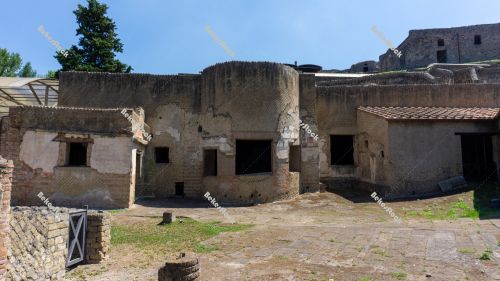
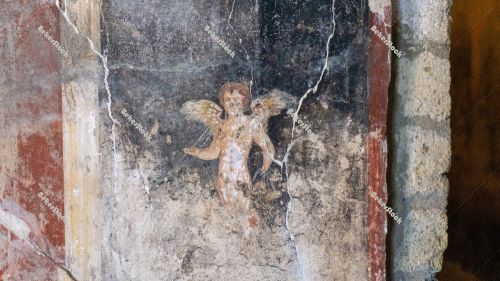
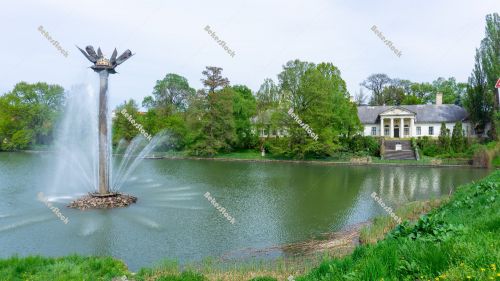

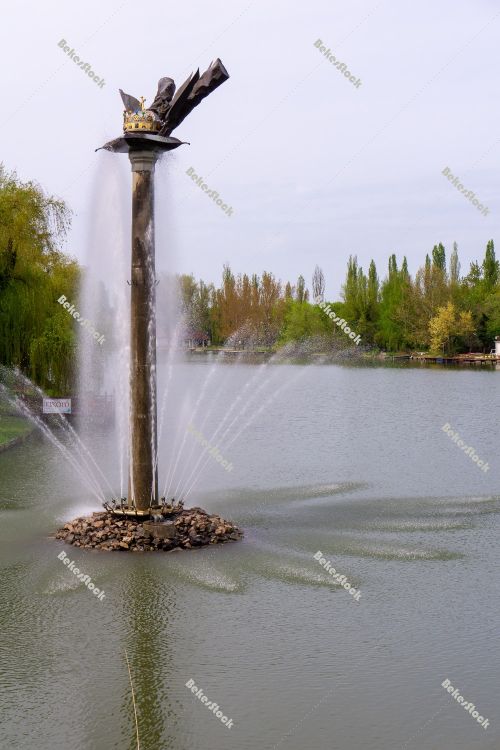
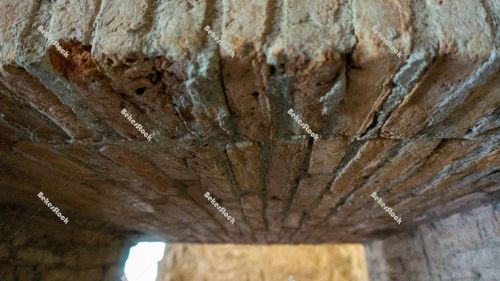


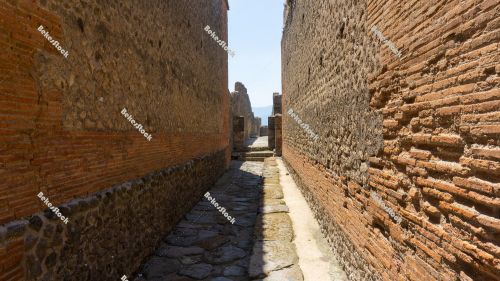
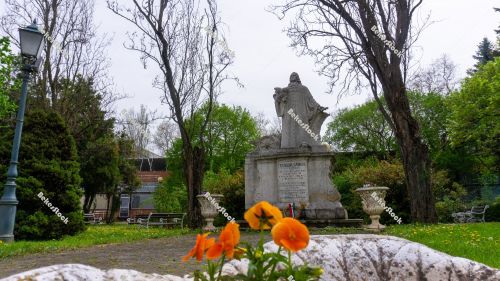
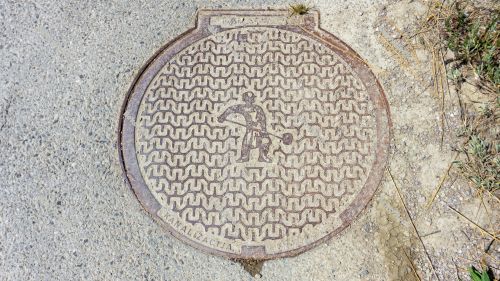




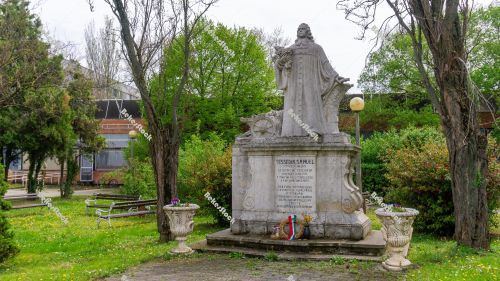

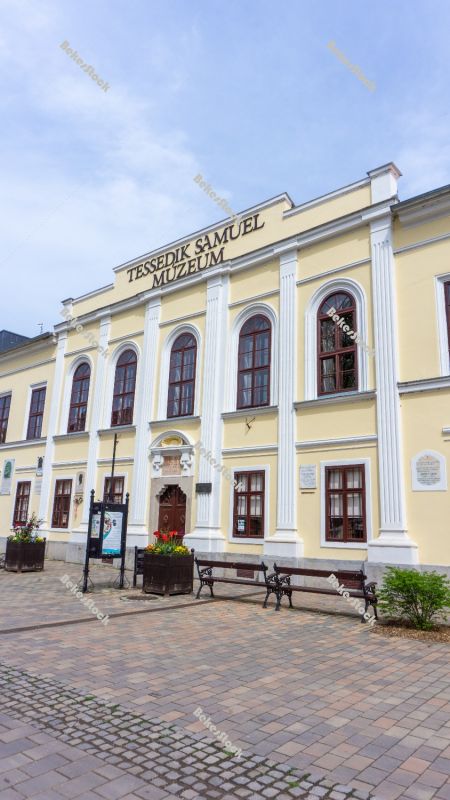
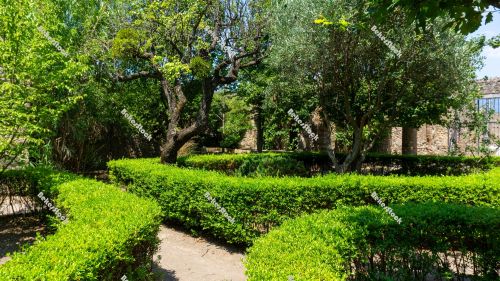
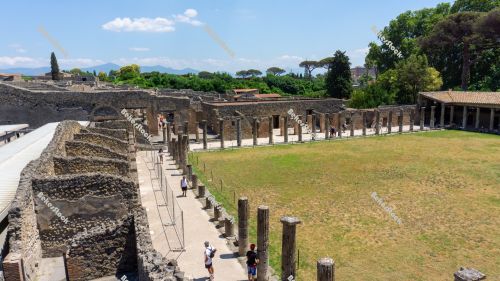
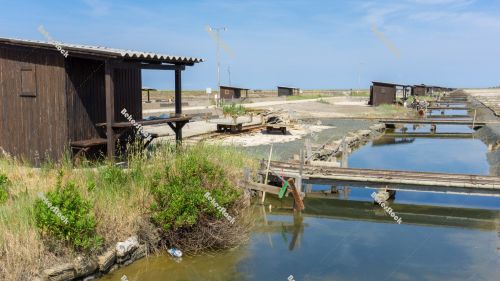
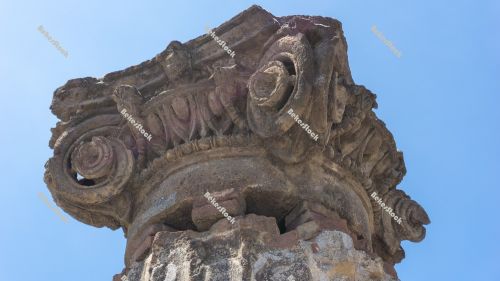

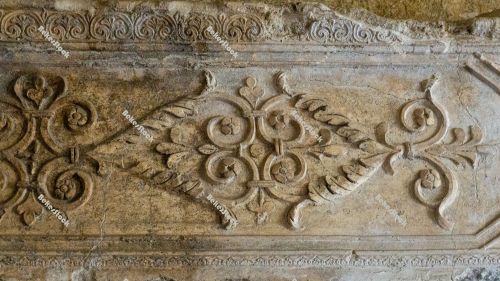
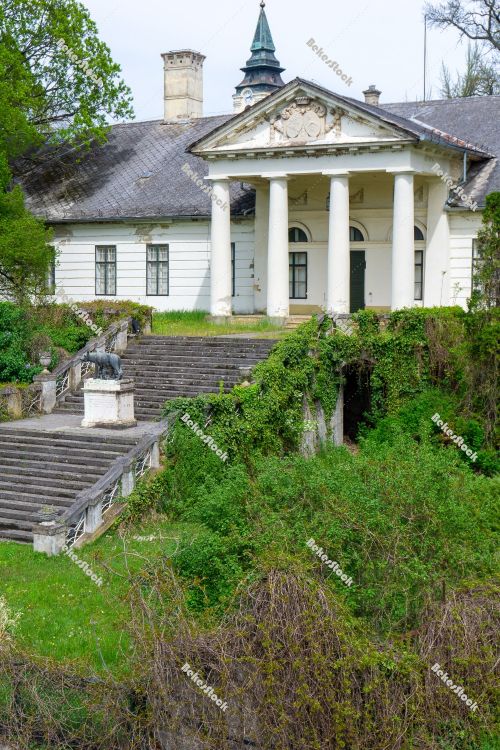
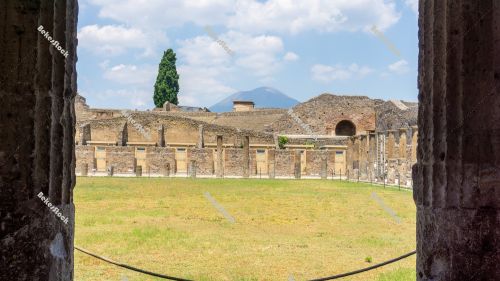

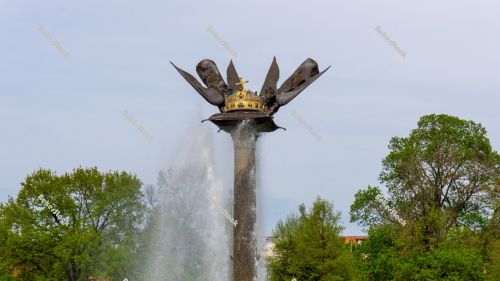
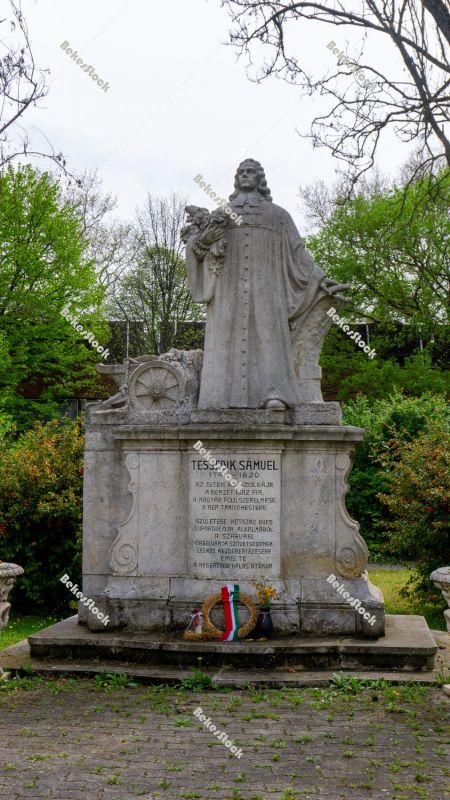
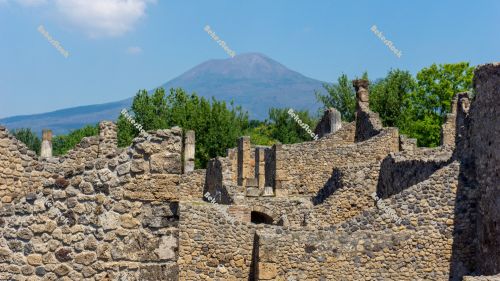
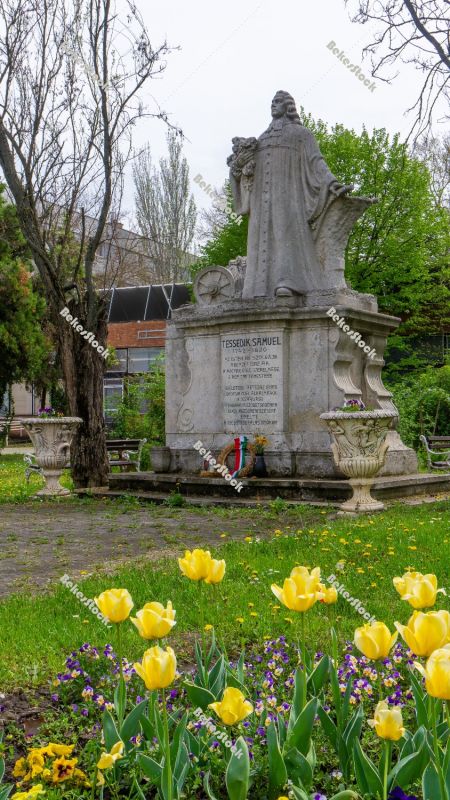
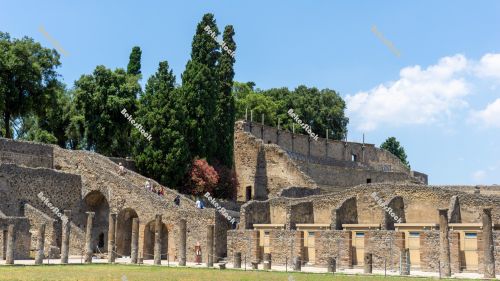
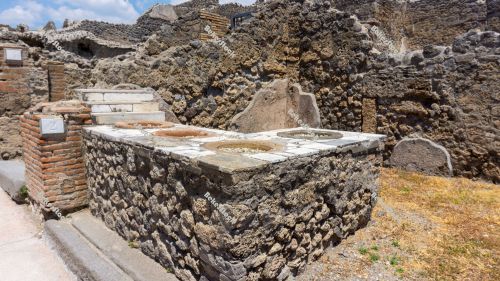
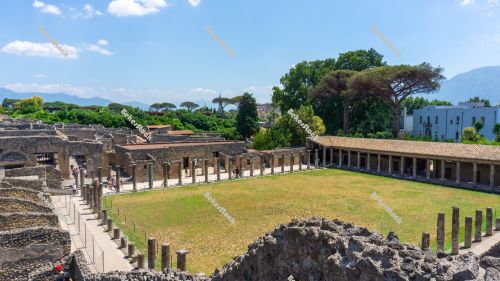
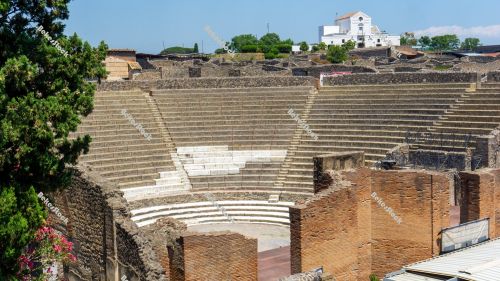
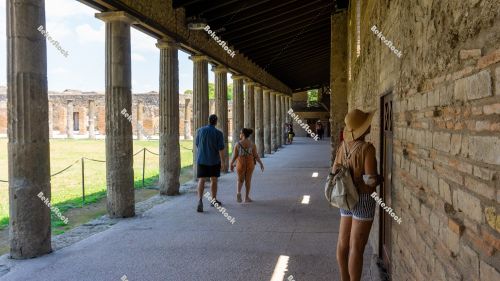
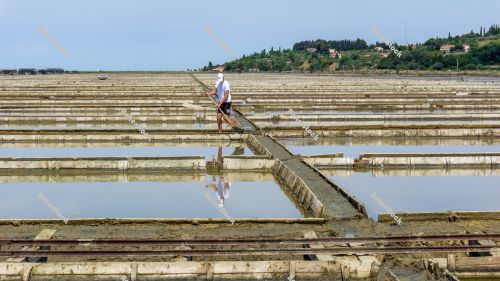
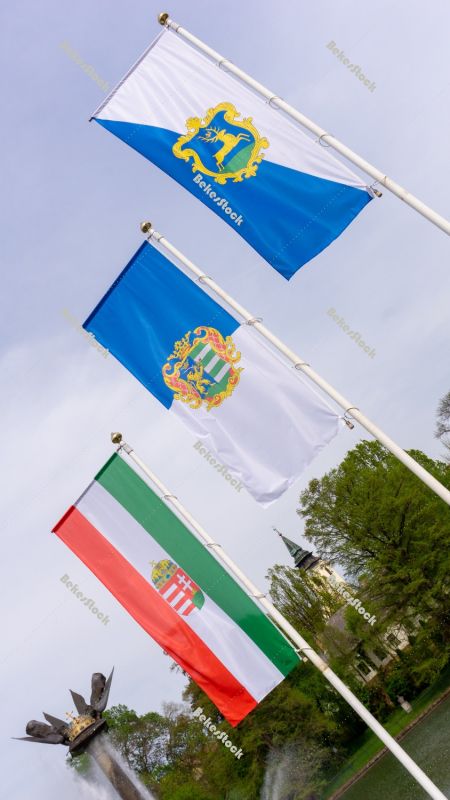
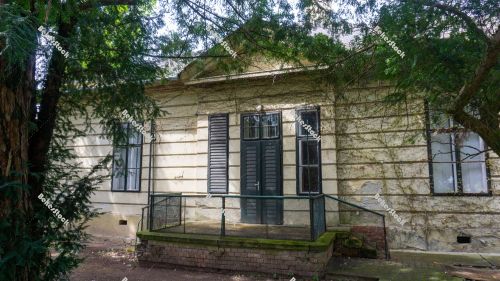
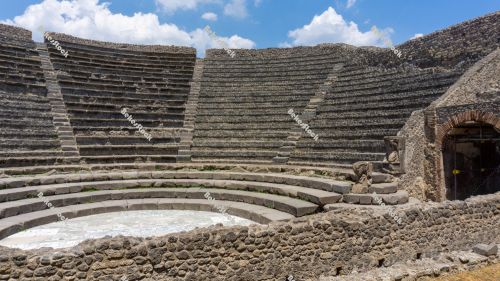
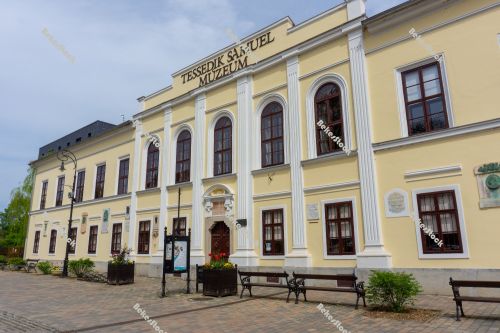
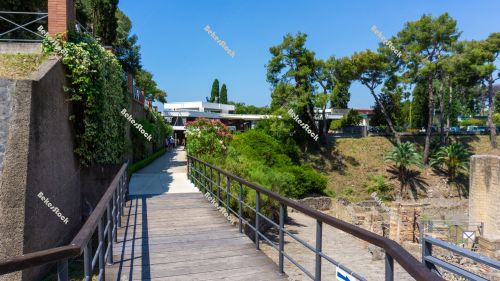

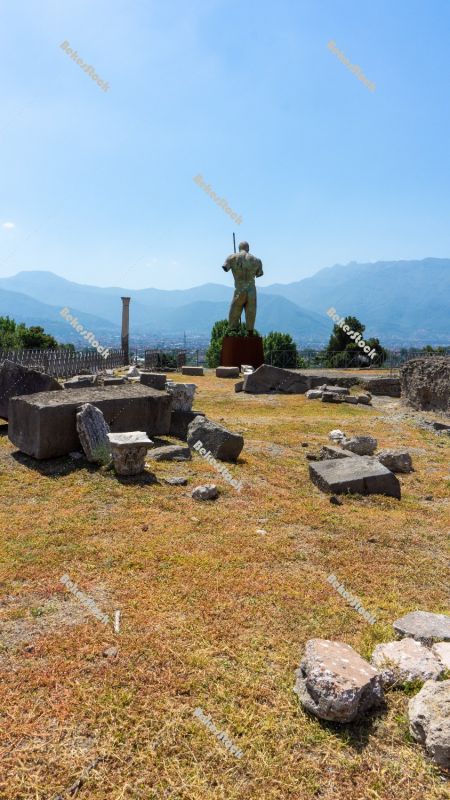
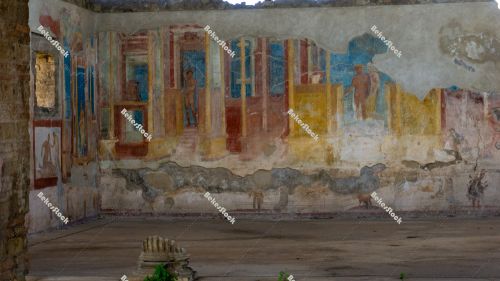




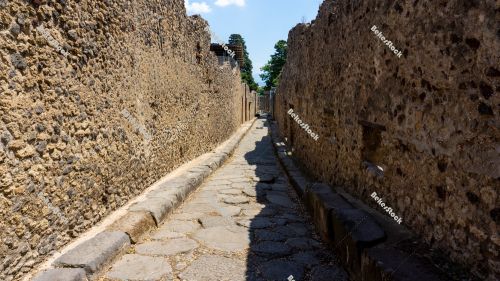
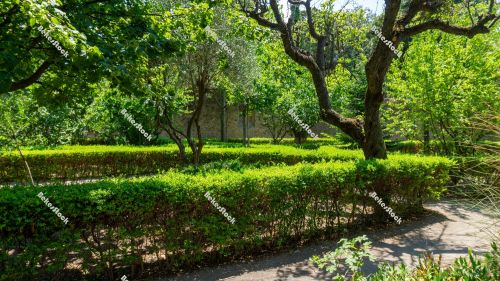

-
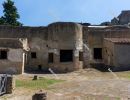 The Suburban Baths in Pompeii. Pompei, Campania, Italy, July 202
The Suburban Baths in Pompeii. Pompei, Campania, Italy, July 202 -
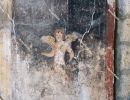 Detail of a fresco in the Suburban Baths in Pompeii. Pompei, Cam
Detail of a fresco in the Suburban Baths in Pompeii. Pompei, Cam -
 Millenium Memorial (`Milleniumi Emlékmű`) and Bolza Castle (`B
Millenium Memorial (`Milleniumi Emlékmű`) and Bolza Castle (`B -
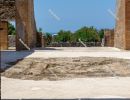 Courtyard of a building in Pompeii, with Lenader and the blue sk
Courtyard of a building in Pompeii, with Lenader and the blue sk -
 Millenium Memorial (`Milleniumi Emlékmű`) - Szarvas, Bekes Cou
Millenium Memorial (`Milleniumi Emlékmű`) - Szarvas, Bekes Cou -
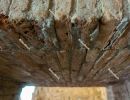 The door is a brick ceiling in the Suburban Baths in Pompeii. Po
The door is a brick ceiling in the Suburban Baths in Pompeii. Po -
 Bolza Castle (`Bolza-kastély`). Szarvas, Bekes County, Hungary
Bolza Castle (`Bolza-kastély`). Szarvas, Bekes County, Hungary -
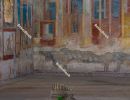 GYMNASIUM OF THE IUVENES. The entrance of the Gymnasium is locat
GYMNASIUM OF THE IUVENES. The entrance of the Gymnasium is locat -
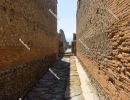 Alley way (`vicolo`) in Pompeii. The narrow street is lined with
Alley way (`vicolo`) in Pompeii. The narrow street is lined with -
 Statue of Tessedik (`Tessedik szobor`). Szarvas, Bekes County, H
Statue of Tessedik (`Tessedik szobor`). Szarvas, Bekes County, H -
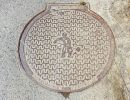 Manhole cover with salt worker illustration. Saltworks `soline`
Manhole cover with salt worker illustration. Saltworks `soline` -
 The flag of Hungary, the flag of Békés county and the flag of
The flag of Hungary, the flag of Békés county and the flag of -
 Detail of a graffiti in Pompeii. Pompei, Campania, Italy, July 2
Detail of a graffiti in Pompeii. Pompei, Campania, Italy, July 2 -
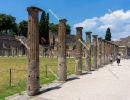 Cloister - QUADRIPORTICUS OF THE THEATRES OR GLADIATORS BARRACKS
Cloister - QUADRIPORTICUS OF THE THEATRES OR GLADIATORS BARRACKS -
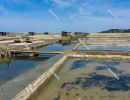 Salt pan, saltworks `soline` in Sečovlje - Sicciole, Portoroz,
Salt pan, saltworks `soline` in Sečovlje - Sicciole, Portoroz, -
 Statue of Tessedik (`Tessedik szobor`). Szarvas, Bekes County, H
Statue of Tessedik (`Tessedik szobor`). Szarvas, Bekes County, H -
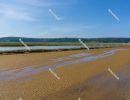 Salt pan, saltworks `soline` in Sečovlje - Sicciole, Portoroz,
Salt pan, saltworks `soline` in Sečovlje - Sicciole, Portoroz, -
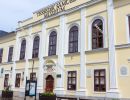 Sámuel Tessedik Museum (`Tessedik Sámuel Múzeum`). Szarvas, B
Sámuel Tessedik Museum (`Tessedik Sámuel Múzeum`). Szarvas, B -
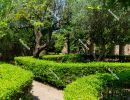 Botanical Garden (`Orto Botanico`) in Pompeii. Pompei, Campania,
Botanical Garden (`Orto Botanico`) in Pompeii. Pompei, Campania, -
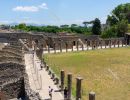 QUADRIPORTICUS OF THE THEATRES OR GLADIATORS BARRACKS in Pompeii
QUADRIPORTICUS OF THE THEATRES OR GLADIATORS BARRACKS in Pompeii -
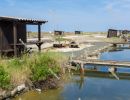 Salt pan, saltworks `soline` in Sečovlje - Sicciole, Portoroz,
Salt pan, saltworks `soline` in Sečovlje - Sicciole, Portoroz, -
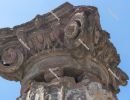 Ancient Roman column capital (head) with blue sky in the backgro
Ancient Roman column capital (head) with blue sky in the backgro -
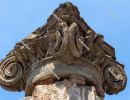 Ancient Roman column capital (head) with blue sky in the backgro
Ancient Roman column capital (head) with blue sky in the backgro -
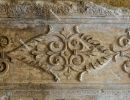 Wall decoration, stucco in the Suburban Baths in Pompeii. Pompei
Wall decoration, stucco in the Suburban Baths in Pompeii. Pompei -
 Bolza Castle (`Bolza-kastély`). Szarvas, Bekes County, Hungary
Bolza Castle (`Bolza-kastély`). Szarvas, Bekes County, Hungary -
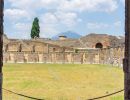 The view of Vesuvius from the Gladiators' Barracks. Pompei, Camp
The view of Vesuvius from the Gladiators' Barracks. Pompei, Camp -
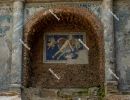 Fake cave, adorned with a mosaic in the Suburban Baths in Pompei
Fake cave, adorned with a mosaic in the Suburban Baths in Pompei -
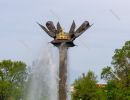 Millenium Memorial (`Milleniumi Emlékmű`) - Szarvas, Bekes Cou
Millenium Memorial (`Milleniumi Emlékmű`) - Szarvas, Bekes Cou -
 Statue of Tessedik (`Tessedik szobor`). Szarvas, Bekes County, H
Statue of Tessedik (`Tessedik szobor`). Szarvas, Bekes County, H -
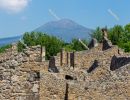 Ancient ruins of Pompeii, with Mount Vesuvius (`Vesuvio`) in the
Ancient ruins of Pompeii, with Mount Vesuvius (`Vesuvio`) in the -
 Statue of Tessedik (`Tessedik szobor`). Szarvas, Bekes County, H
Statue of Tessedik (`Tessedik szobor`). Szarvas, Bekes County, H -
 QUADRIPORTICUS OF THE THEATRES OR GLADIATORS BARRACKS in Pompeii
QUADRIPORTICUS OF THE THEATRES OR GLADIATORS BARRACKS in Pompeii -
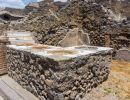 Ancient tavern (Thermopolium) in Pompeii. Pompei, Campania, Ital
Ancient tavern (Thermopolium) in Pompeii. Pompei, Campania, Ital -
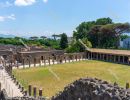 QUADRIPORTICUS OF THE THEATRES OR GLADIATORS BARRACKS in Pompeii
QUADRIPORTICUS OF THE THEATRES OR GLADIATORS BARRACKS in Pompeii -
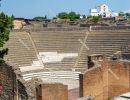 Large Theatre (`Teatro Grande`) in Pompeii. Pompei, Campania, It
Large Theatre (`Teatro Grande`) in Pompeii. Pompei, Campania, It -
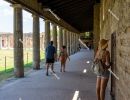 Cloister - QUADRIPORTICUS OF THE THEATRES OR GLADIATORS BARRACKS
Cloister - QUADRIPORTICUS OF THE THEATRES OR GLADIATORS BARRACKS -
 Salt workers, salt minerin salt pan, saltworks `soline` in Sečo
Salt workers, salt minerin salt pan, saltworks `soline` in Sečo -
 The flag of Hungary, the flag of Békés county and the flag of
The flag of Hungary, the flag of Békés county and the flag of -
 Old house in the park. Szarvas, Bekes County, Hungary
Old house in the park. Szarvas, Bekes County, Hungary -
 SMALL THEATRE – ODEON in Pompeii. Pompei, Campania, Italy, Jul
SMALL THEATRE – ODEON in Pompeii. Pompei, Campania, Italy, Jul -
 Sámuel Tessedik Museum (`Tessedik Sámuel Múzeum`). Szarvas, B
Sámuel Tessedik Museum (`Tessedik Sámuel Múzeum`). Szarvas, B -
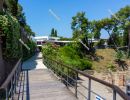 Ticket office in the Archaeological Park of Pompeii, photographe
Ticket office in the Archaeological Park of Pompeii, photographe -
 The flag of Hungary, the flag of Békés county and the flag of
The flag of Hungary, the flag of Békés county and the flag of -
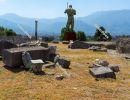 Sanctuary of Venus with bronze statue of Daedalus (`Dedalo`) in
Sanctuary of Venus with bronze statue of Daedalus (`Dedalo`) in -
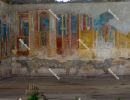 GYMNASIUM OF THE IUVENES. The entrance of the Gymnasium is locat
GYMNASIUM OF THE IUVENES. The entrance of the Gymnasium is locat -
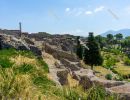 Bronze statue of Daedalus (`Dedalo`) on the terrace of the Sanct
Bronze statue of Daedalus (`Dedalo`) on the terrace of the Sanct -
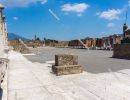 Civil Forum in Pompeii. The blue sky and Mount Vesuvius provide
Civil Forum in Pompeii. The blue sky and Mount Vesuvius provide -
 Mosaic decoration in the Suburban Baths in Pompeii. Pompei, Camp
Mosaic decoration in the Suburban Baths in Pompeii. Pompei, Camp -
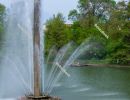 Millenium Memorial (`Milleniumi Emlékmű`) - Szarvas, Bekes Cou
Millenium Memorial (`Milleniumi Emlékmű`) - Szarvas, Bekes Cou -
 Street (`via`) in Pompeii. The narrow street is lined with stone
Street (`via`) in Pompeii. The narrow street is lined with stone -
 Botanical Garden (`Orto Botanico`) in Pompeii. Pompei, Campania,
Botanical Garden (`Orto Botanico`) in Pompeii. Pompei, Campania, -
![Lutheran Old Church (Evangelistic Old Church, `Evangélikus óte Lutheran Old Church (Evangelistic Old Church, `Evangélikus óte]() Lutheran Old Church (Evangelistic Old Church, `Evangélikus óte
Lutheran Old Church (Evangelistic Old Church, `Evangélikus óte

